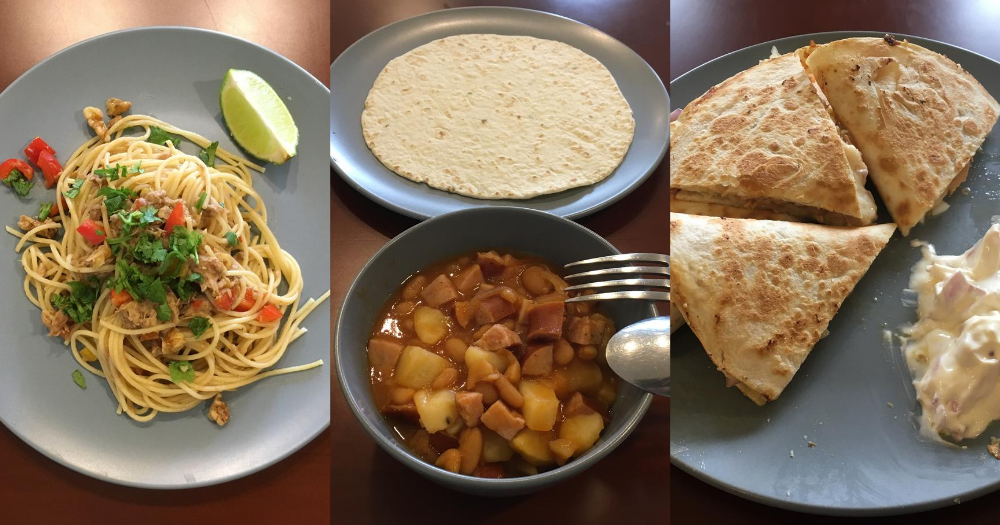When I was younger, I was a big fan of pre-prepared foods, whether they be frozen chicken wings or canned soups or powdered mashed potatoes.
However, as I got older, I grew to think that perhaps it’s a better idea for me to learn to prepare meals using fresher ingredients, as many pre-prepared foods may contain preservatives or other less healthy ingredients.
So when I was asked to try my hand at making five meals in a week using canned food, I have to admit that I wasn’t too excited. I thought that my meals wouldn’t taste fresh, and would be less healthy.
I was glad to find out, though, that the stereotype that my preconceptions about canned food were completely wrong — not all canned foods contain preservatives and additives. In fact, many of them don’t.
While many people tend to eat canned food — especially fish — in sandwiches, I’m not a big fan of sandwiches. So instead, I got a little creative with new ways to eat canned food.
So, without further ado, here are my five (pretty delicious, if I do say so myself) meals that I prepared in a week:
Spicy tuna spaghetti
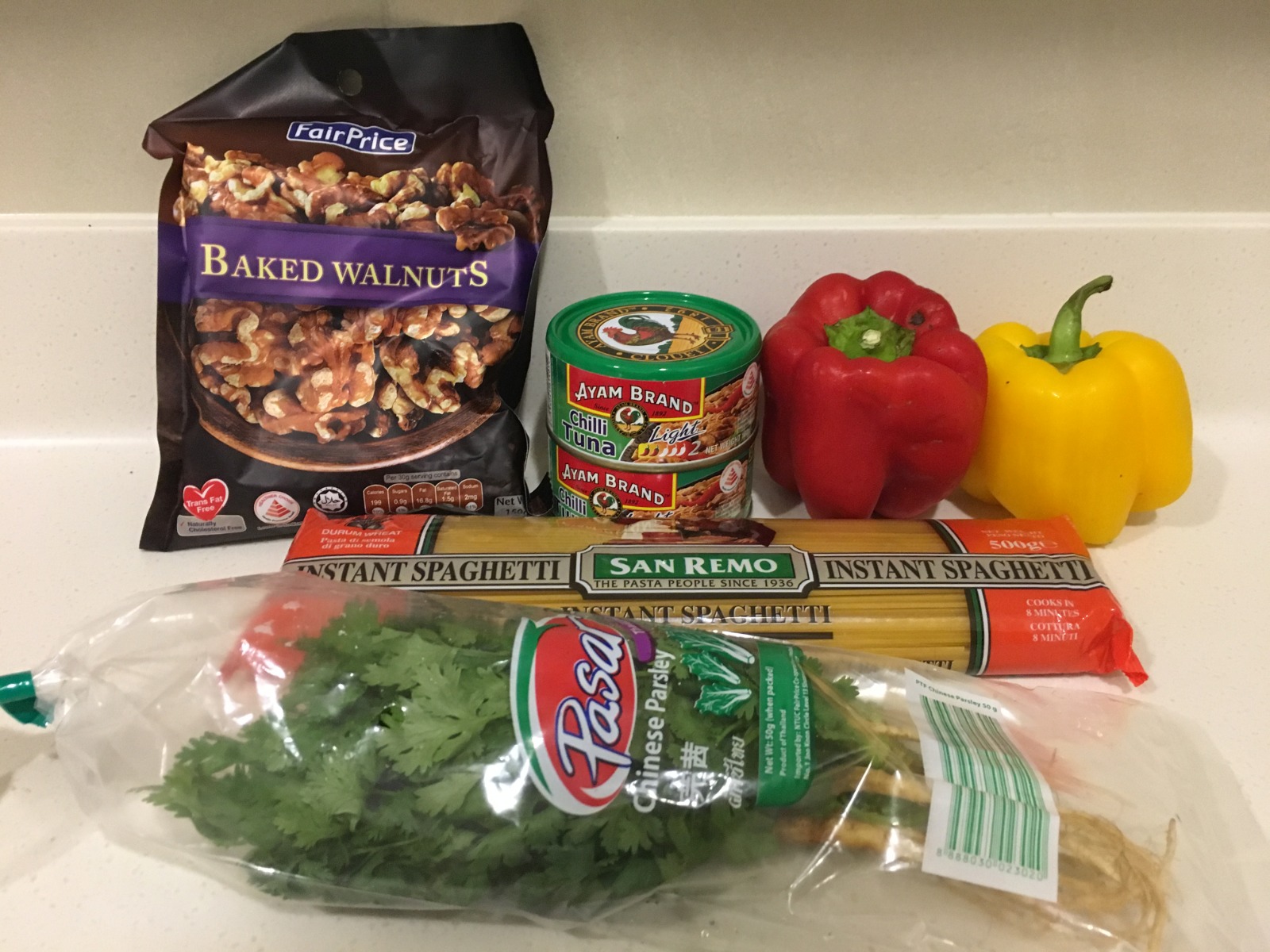 Photo by Jane Zhang.
Photo by Jane Zhang.
The first recipe I made was a spicy tuna spaghetti, made using Ayam Brand Chilli Tuna.
I included some capsicum, even though the recipe I was following didn’t call for any, in order to add some extra vegetables and colour to the dish.
In case you were wondering what level my cooking skills are at, here’s a picture of the small mess I managed to make at the easiest step of the recipe — cooking the spaghetti.
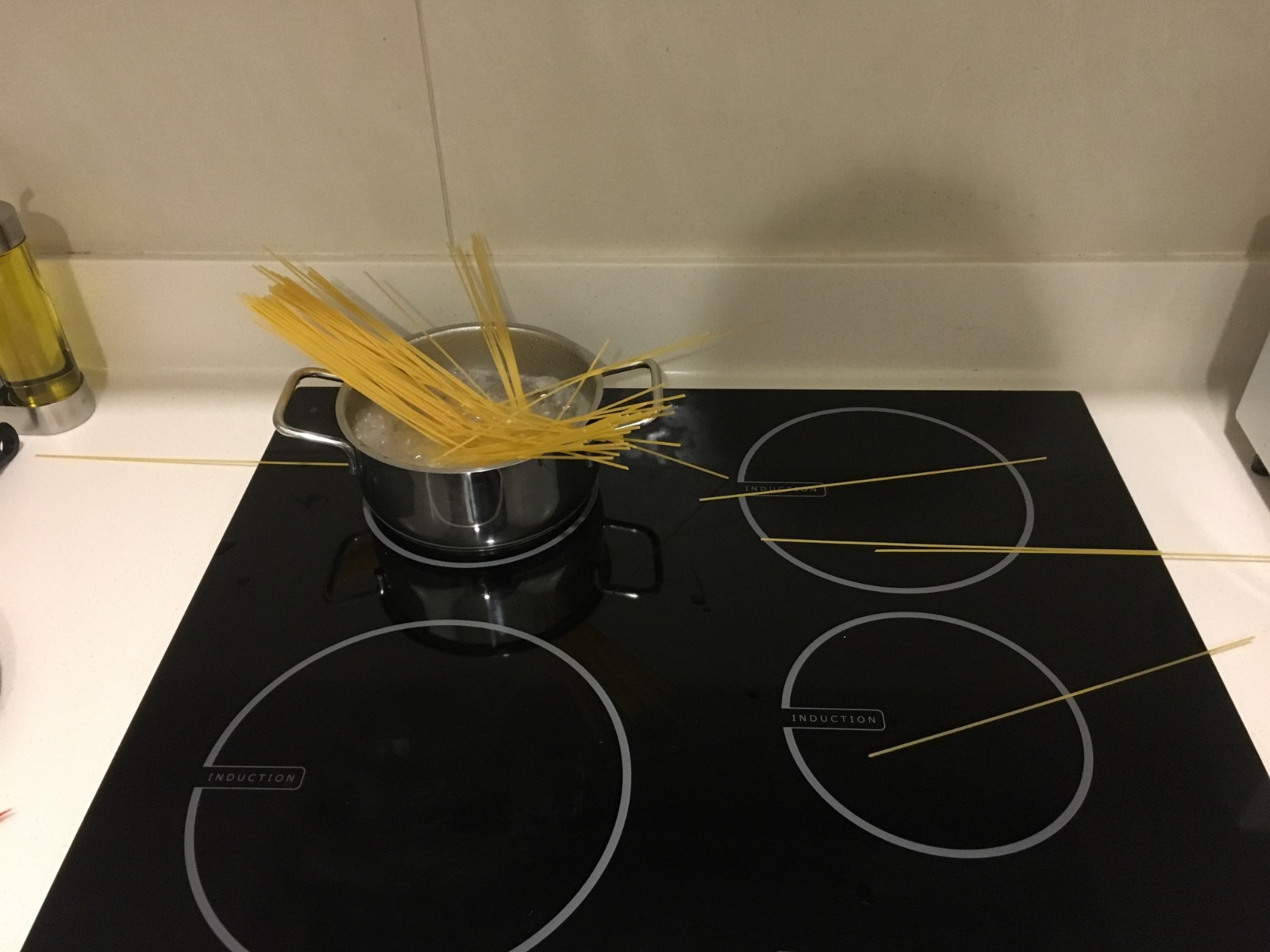 Oops. Photo by Jane Zhang.
Oops. Photo by Jane Zhang.
Luckily, the rest of the recipe was simple enough. All I had to do was chop up the ingredients, cook them (other than the cilantro) briefly, and then stir the canned tuna in.
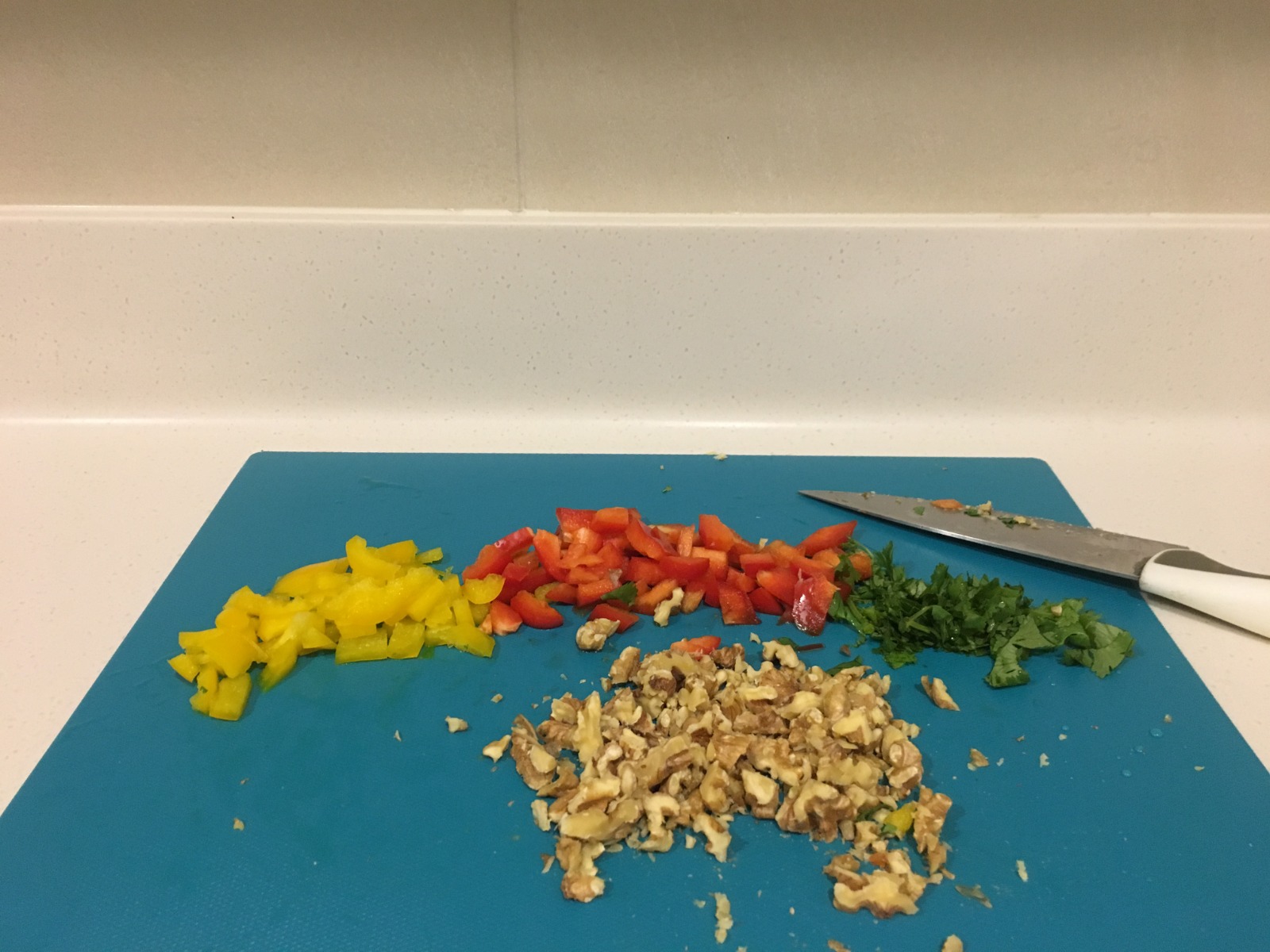 Photo by Jane Zhang.
Photo by Jane Zhang.
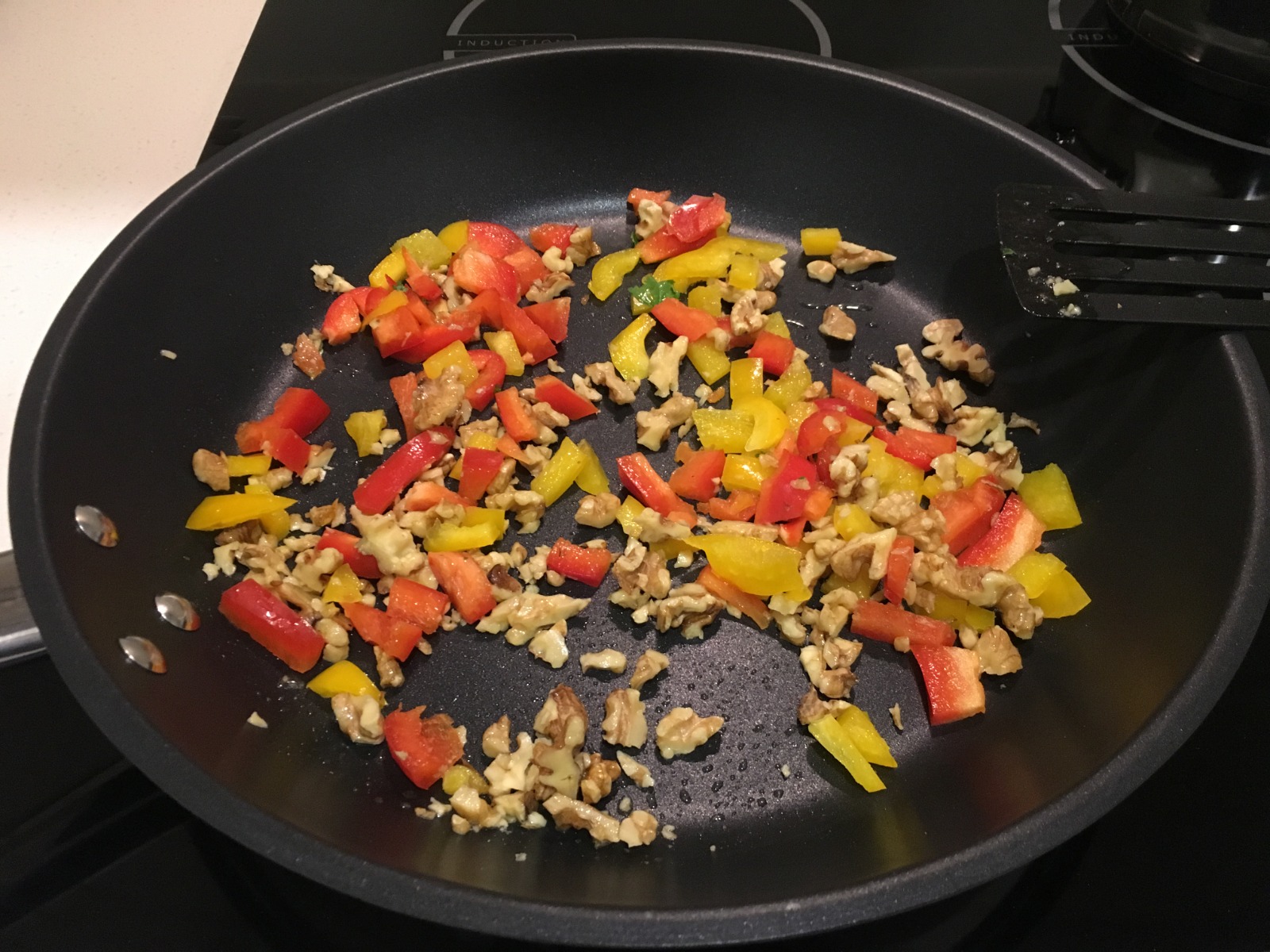 Photo by Jane Zhang.
Photo by Jane Zhang.
I didn’t actually need to cook the tuna, as all of Ayam Brand’s products are ready to eat. I just added it to the pan in order to warm it up a little and stir in the flavours with the rest of the meal.
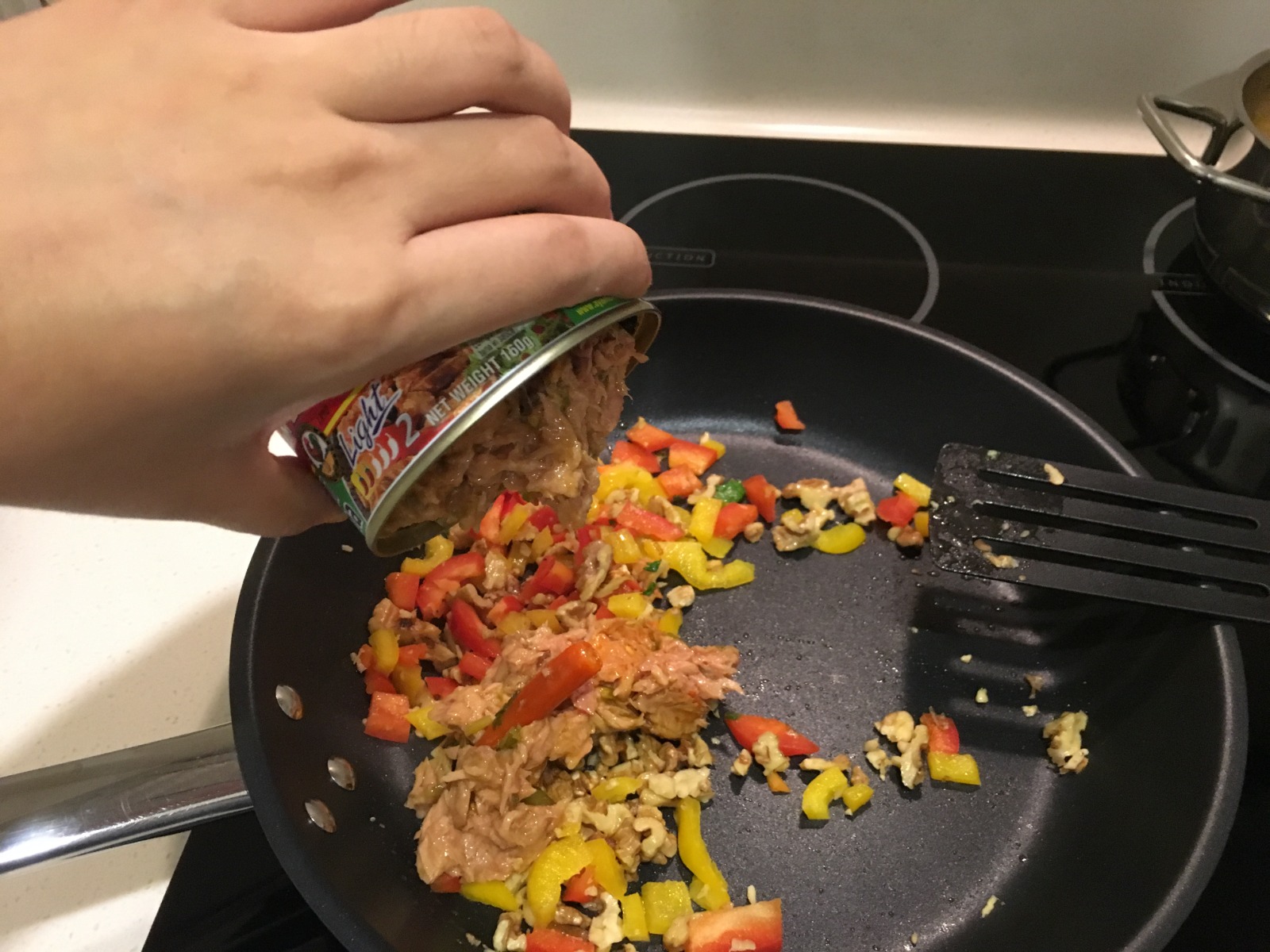 Photo by Jane Zhang.
Photo by Jane Zhang.
I tried to be a little fancy with my plating, with the twisty fork method I’ve seen on cooking videos before:
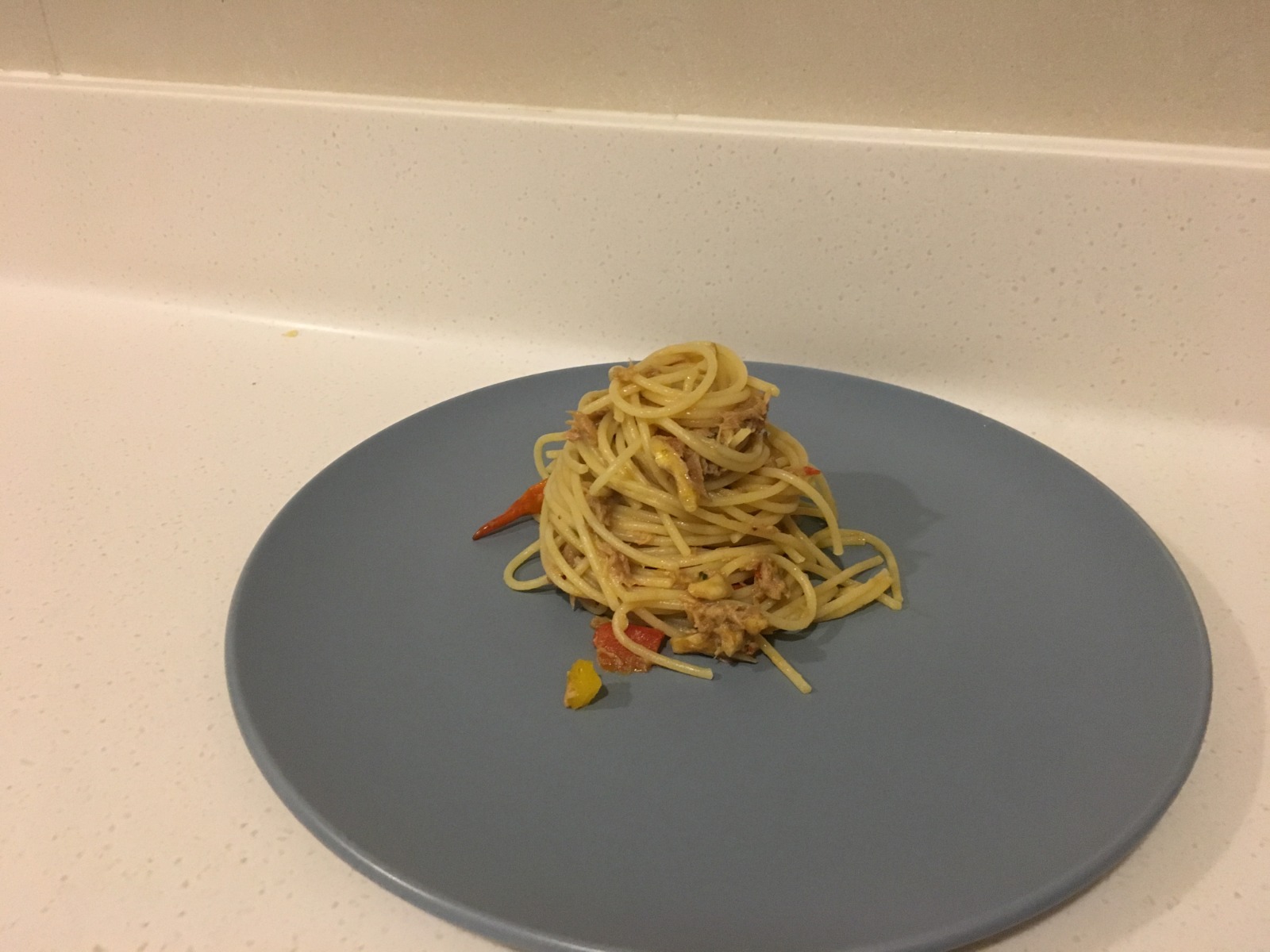 Am I fancy yet? Photo by Jane Zhang.
Am I fancy yet? Photo by Jane Zhang.
But I ended up just opting for a more realistic portion size, and topped the pasta with the cilantro and a squeeze of lime.
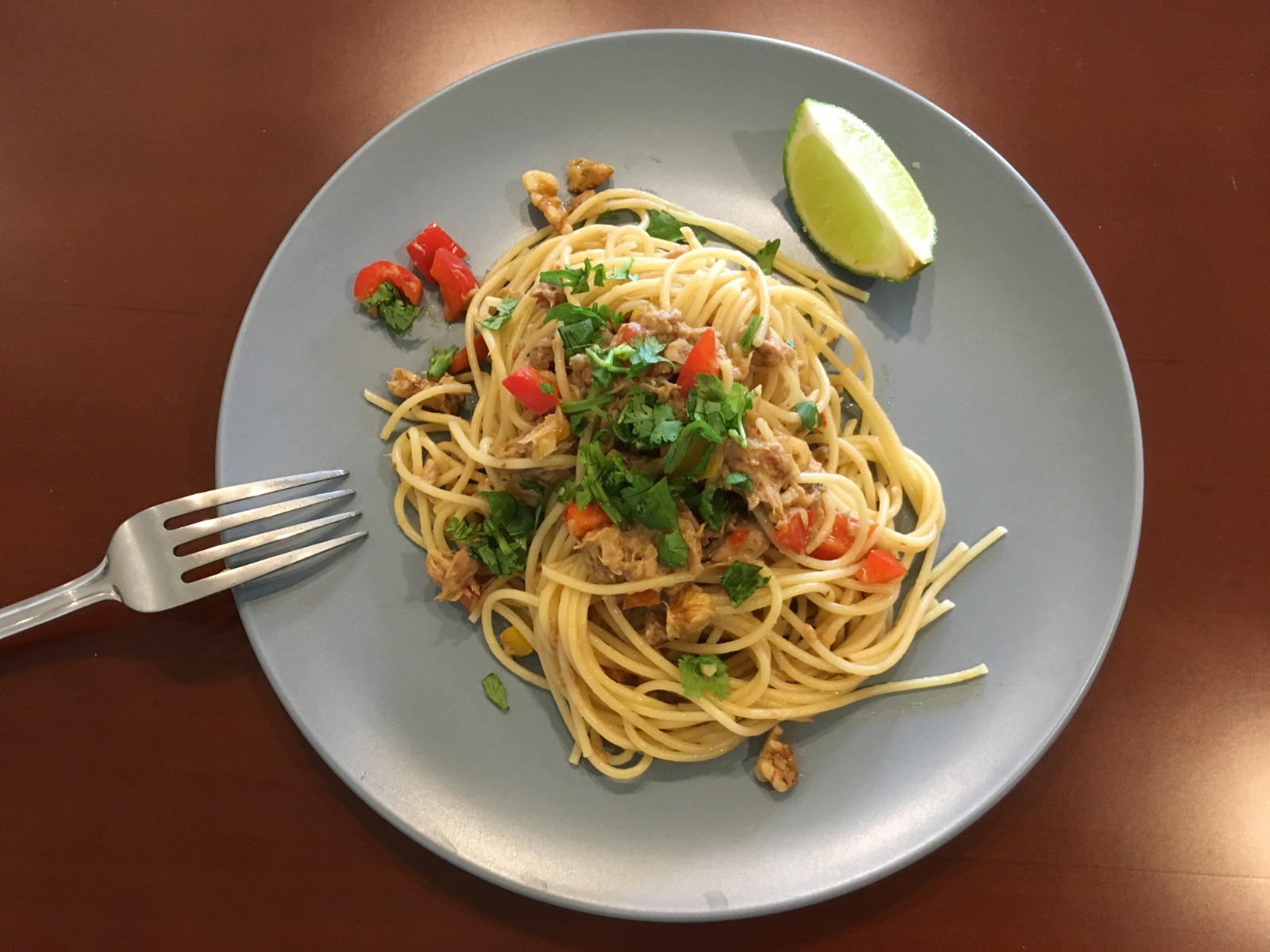 I’m pretty proud of my plating, to be honest. Photo by Jane Zhang.
I’m pretty proud of my plating, to be honest. Photo by Jane Zhang.
I was worried that the taste of the tuna would be too strong and overpower the pasta, but I liked how the lime balanced it out well.
My only gripe with this recipe: My weak taste buds found the chilli tuna a bit too spicy. But for those of you whose spice tolerance are much higher than mine, you can try the fire hot version.
View the full recipe here.
Baked beans with potato and sausage
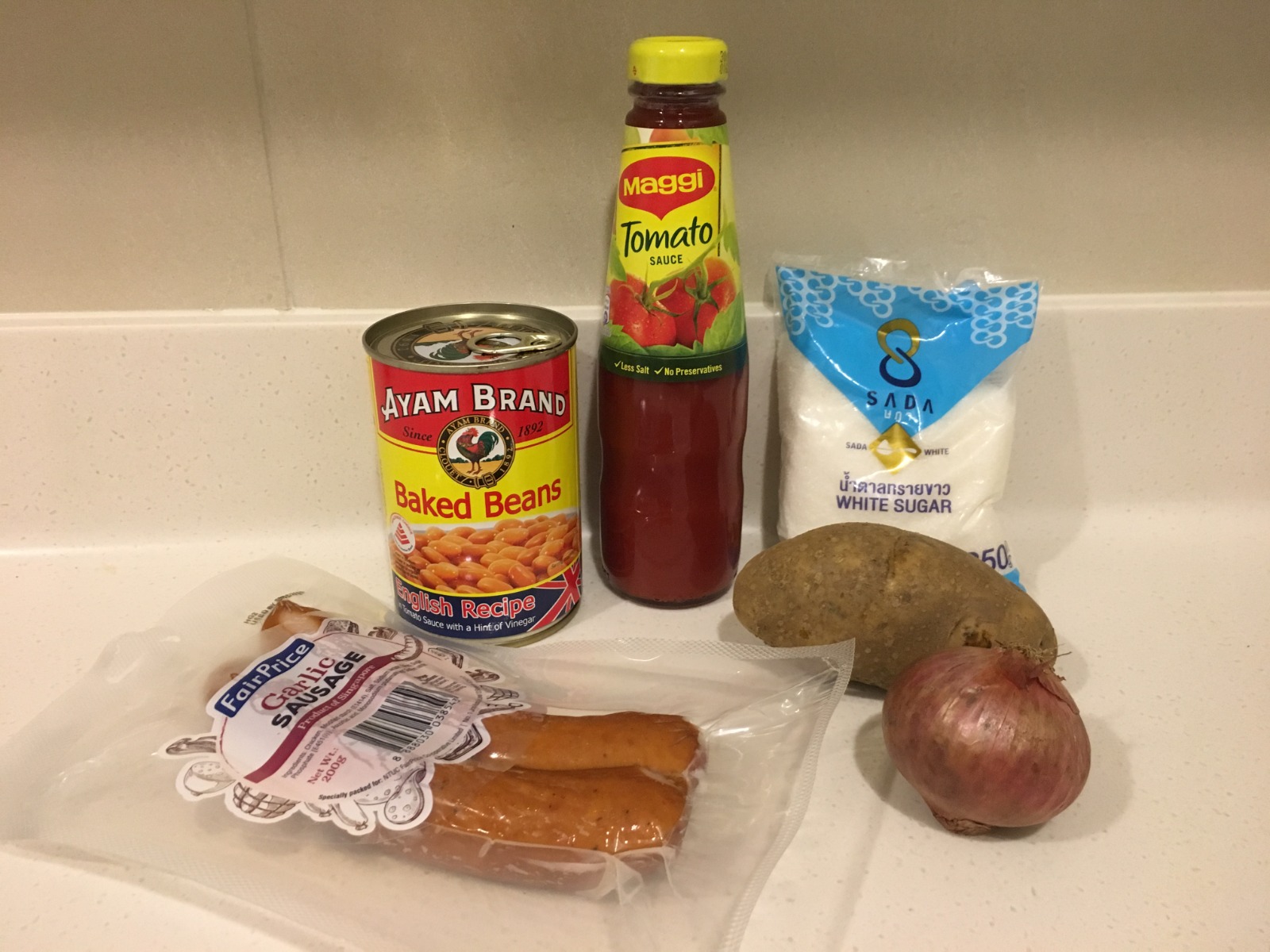 Photo by Jane Zhang.
Photo by Jane Zhang.
The next day, I cooked up a simple baked beans with potato and chicken sausage recipe using Ayam Brand baked beans. There were a few different variants of baked beans to choose from, but I went with the English recipe because I thought it’d fit best with the rest of the recipe.
This recipe also only required a few ingredients, and was pretty easy to whip up.
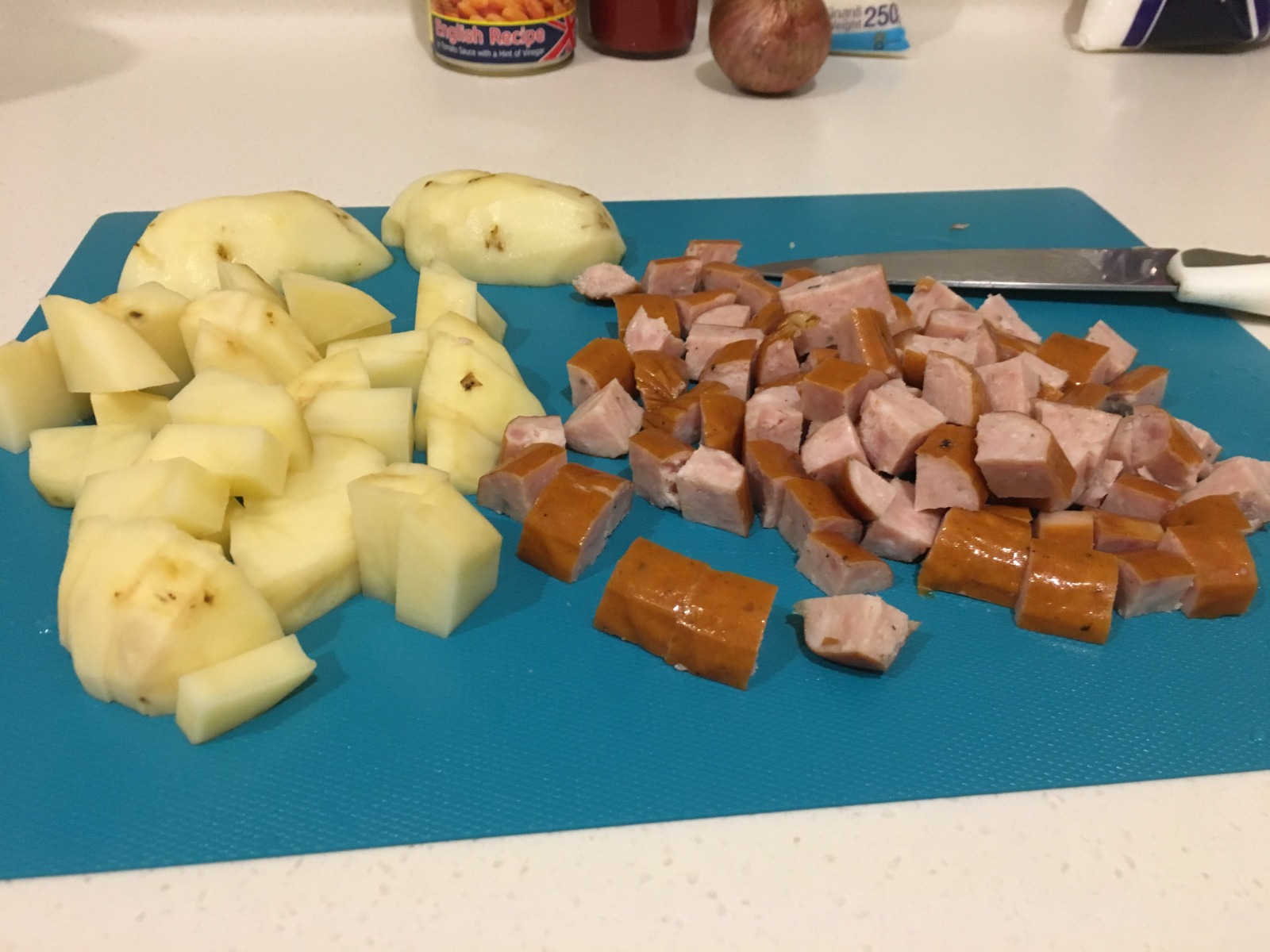 Photo by Jane Zhang.
Photo by Jane Zhang.
One small, but integral, aspect I really appreciated about the Ayam brand canned foods was that all of the cans came with easy-open pull tabs. (This was particularly helpful since I am embarrassed to admit that I have not yet gotten to the part of adulting where I own a can opener.)
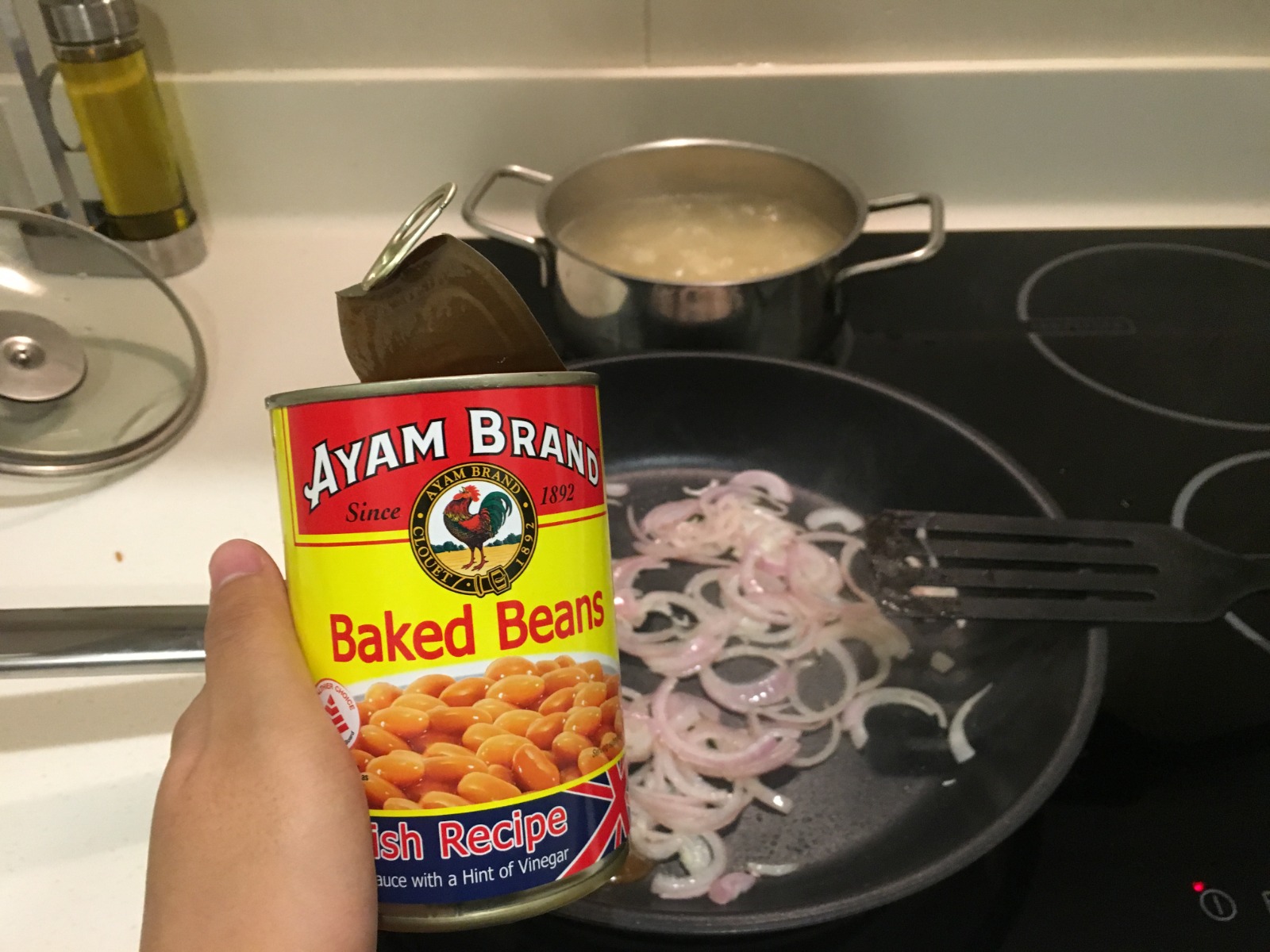 Thankful for the pull tab! Photo by Jane Zhang.
Thankful for the pull tab! Photo by Jane Zhang.
Mixing everything together, it smelled delicious already!
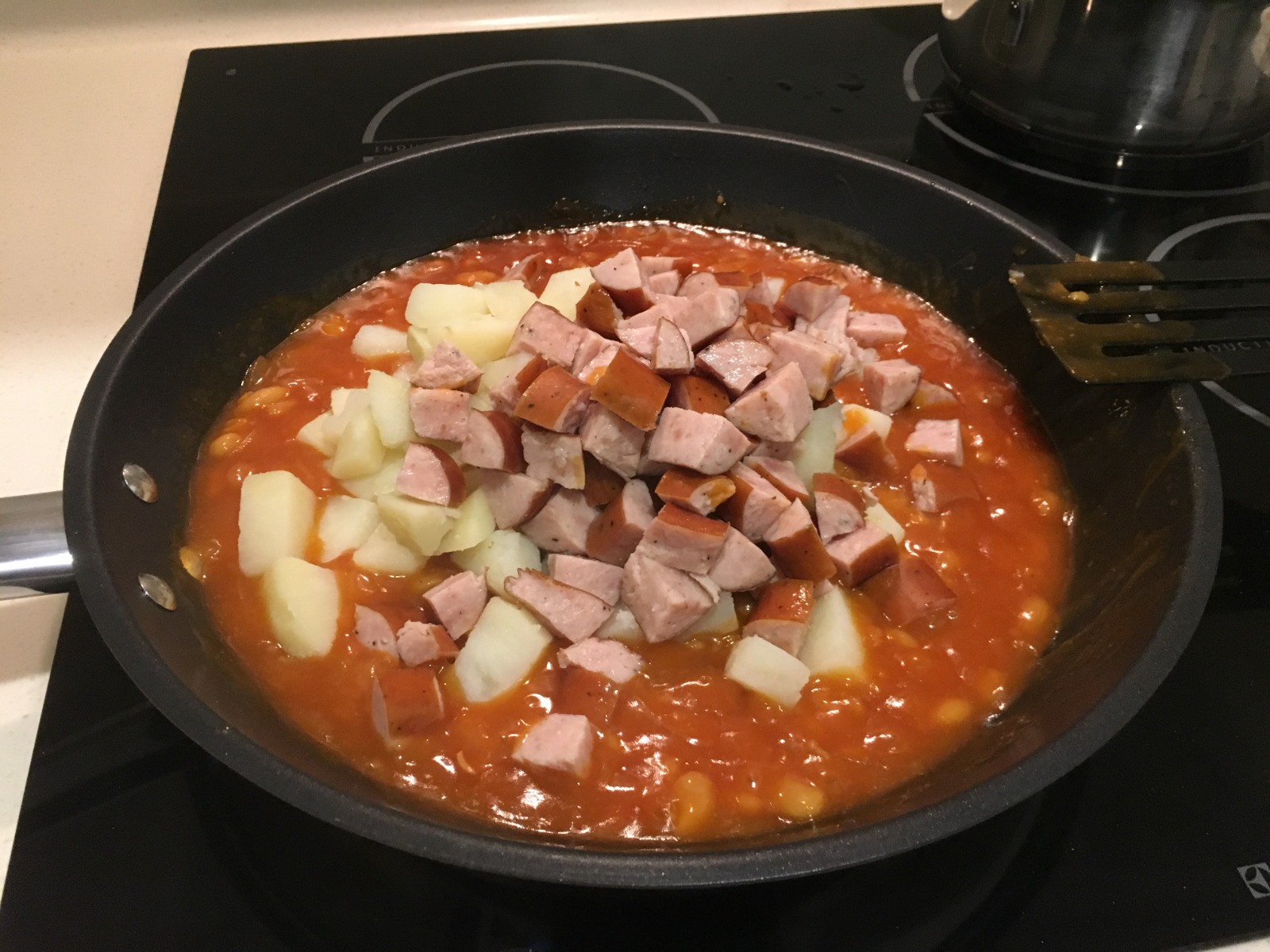 Photo by Jane Zhang.
Photo by Jane Zhang.
This dish is good enough to be eaten on its own or as a side. I wanted some carbs to go with it but was too lazy to cook rice, so I opted to have my baked beans with a tortilla.
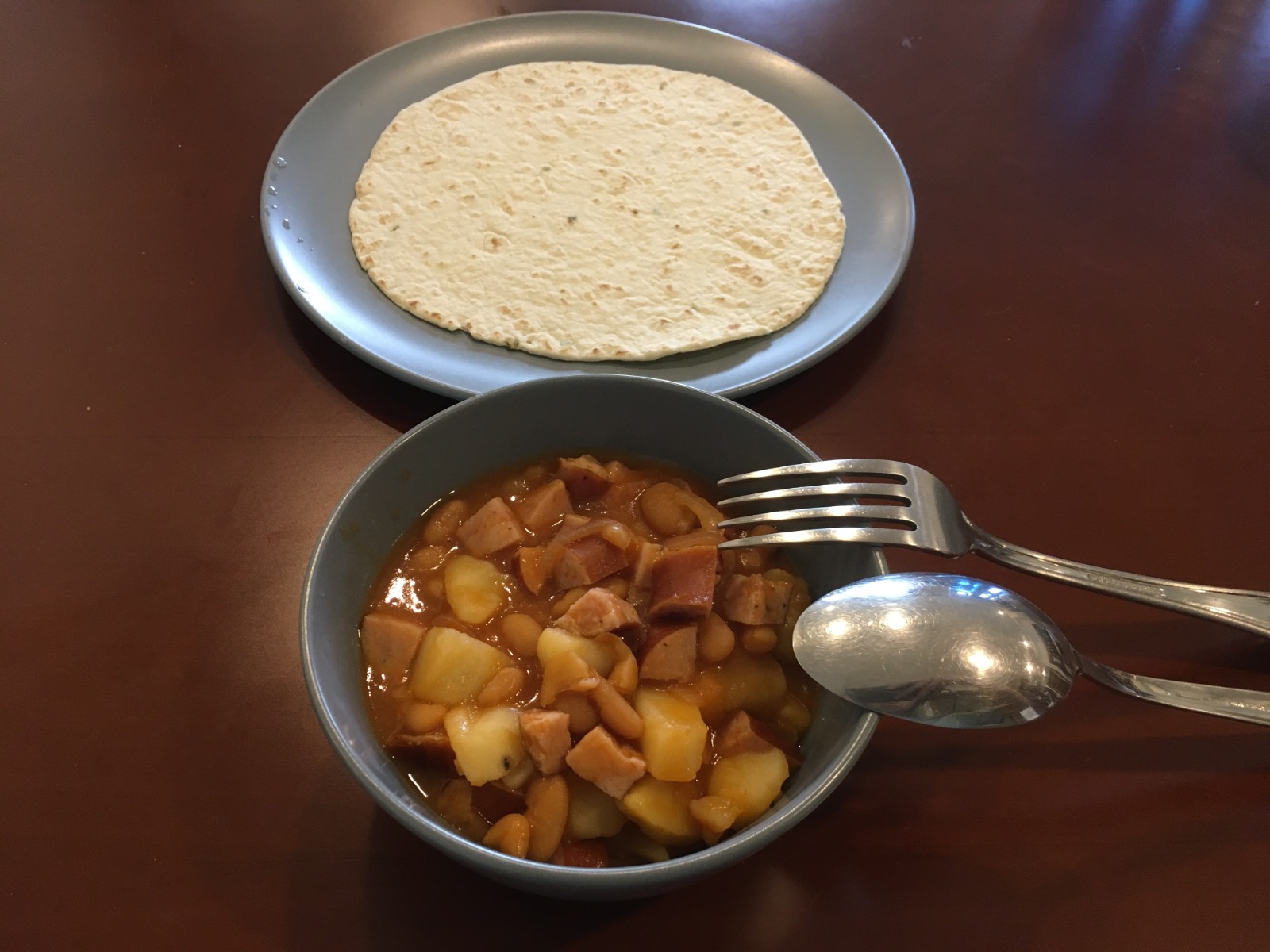 Photo by Jane Zhang.
Photo by Jane Zhang.
This dish was really good, and I ended up having enough leftovers to eat it for two meals. And for someone who normally doesn’t like eating the same thing for multiple meals, I found I enjoyed this dish even the second and third time around! Or you could pair it with a different carb such as toast or rice.
You can see the full recipe here.
Saba donburi
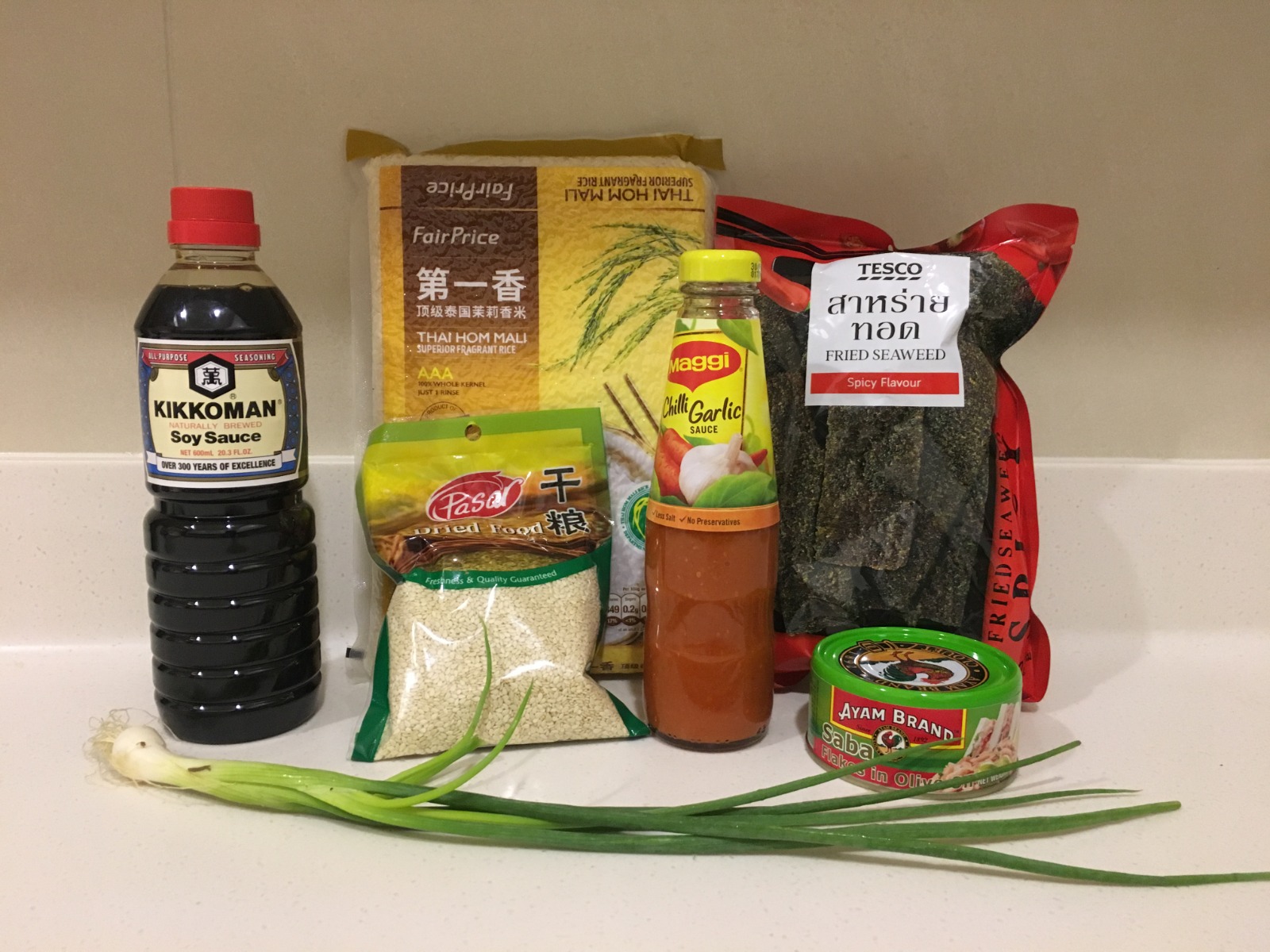 Photo by Jane Zhang.
Photo by Jane Zhang.
For the next recipe, I used one of Ayam brand’s newly-launched canned Saba Flakes in Extra Virgin Olive Oil to make saba donburi.
I was interested in trying it, since it’s Ayam Brand’s latest range of fish besides sardines and tuna, which comes in three of their best-selling flavours.
It was a pretty simple recipe, as the only actual cooking required in this recipe was cooking the rice and toasting the sesame seeds.
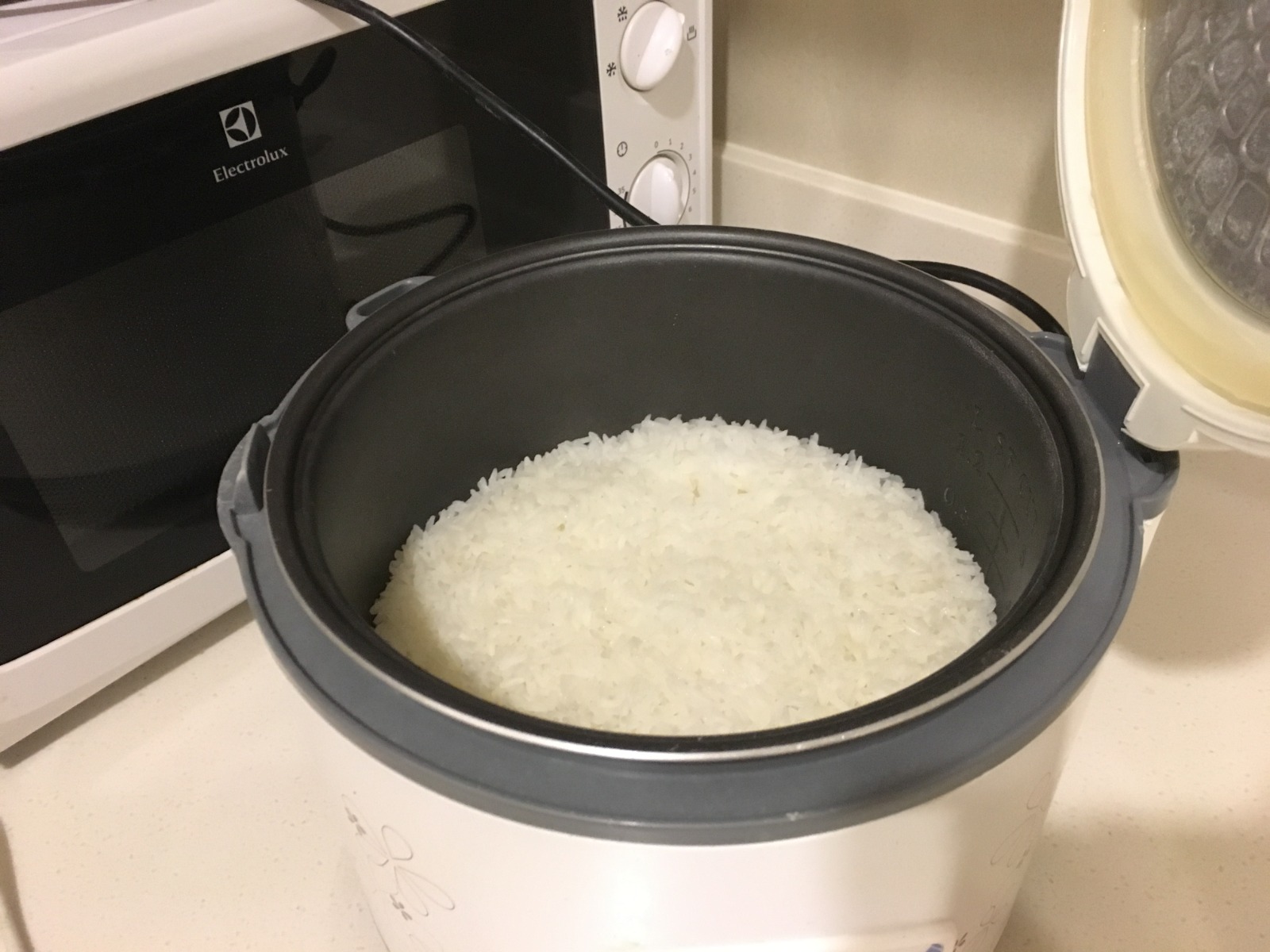 Photo by Jane Zhang.
Photo by Jane Zhang.
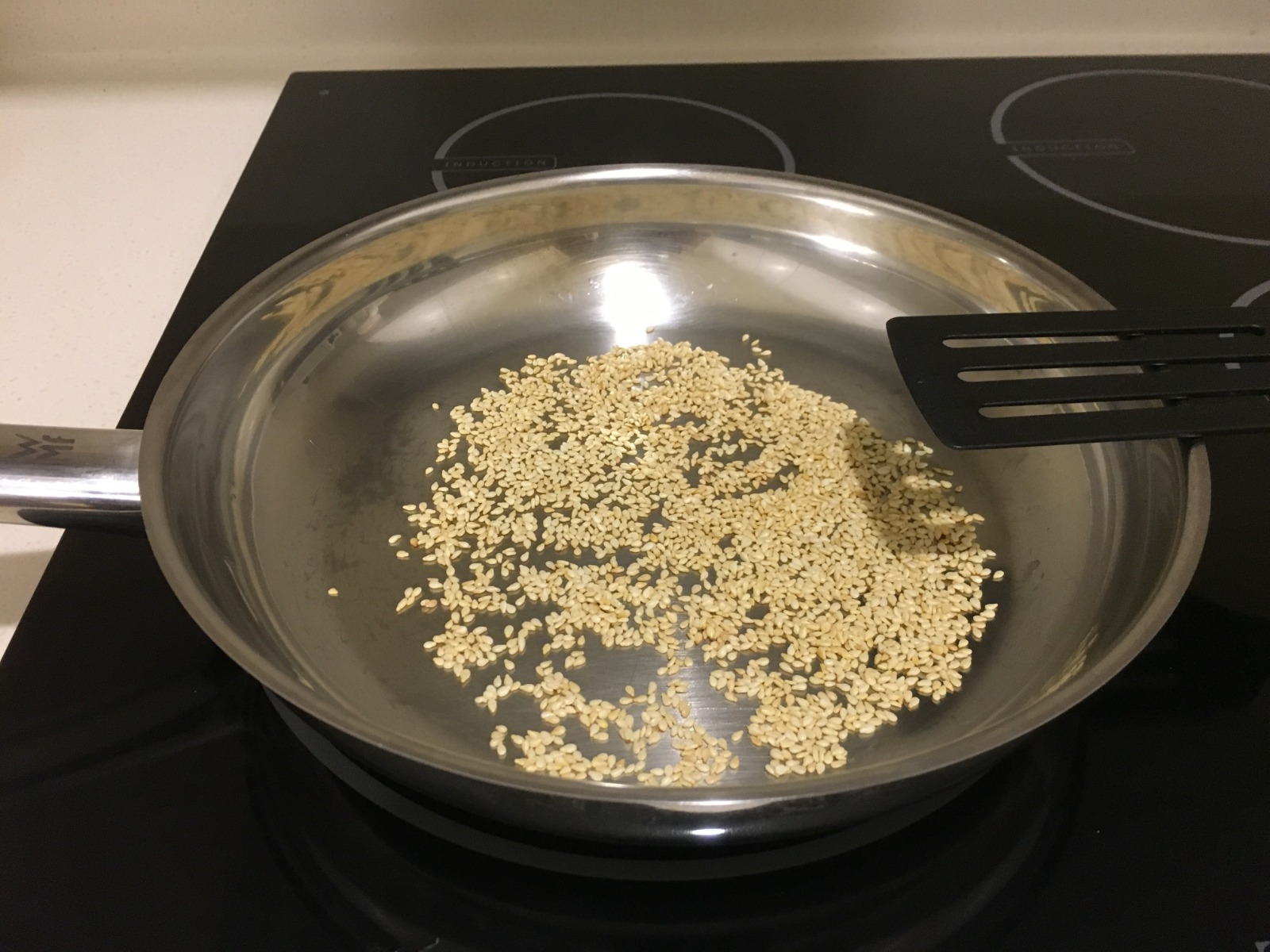 (Not pictured: I may have burnt the sesame seeds just a little…) Photo by Jane Zhang.
(Not pictured: I may have burnt the sesame seeds just a little…) Photo by Jane Zhang.
For the rest of the ingredients, I just needed to prepare them in a bowl with the saba flakes, and combine.
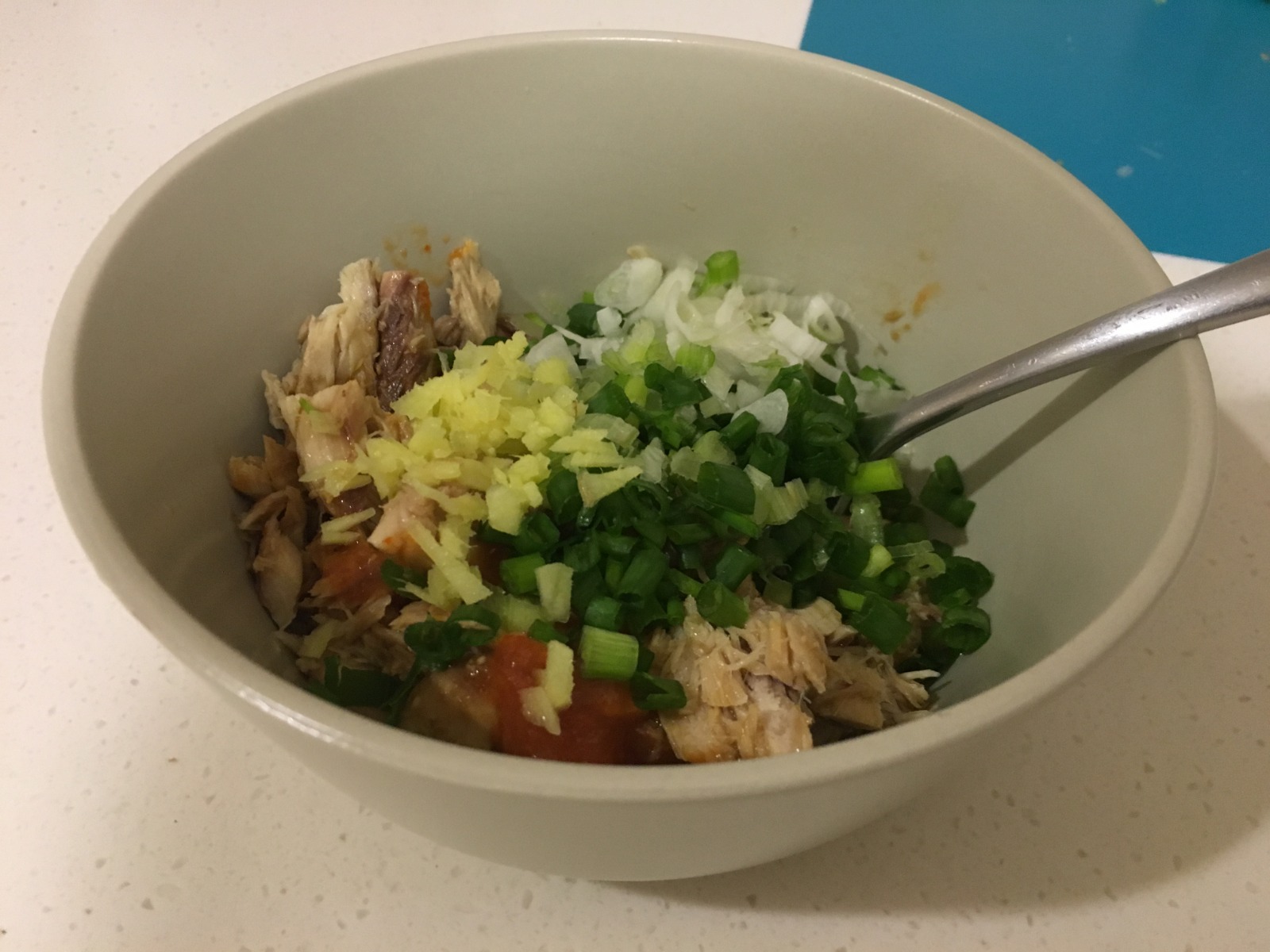 Photo by Jane Zhang.
Photo by Jane Zhang.
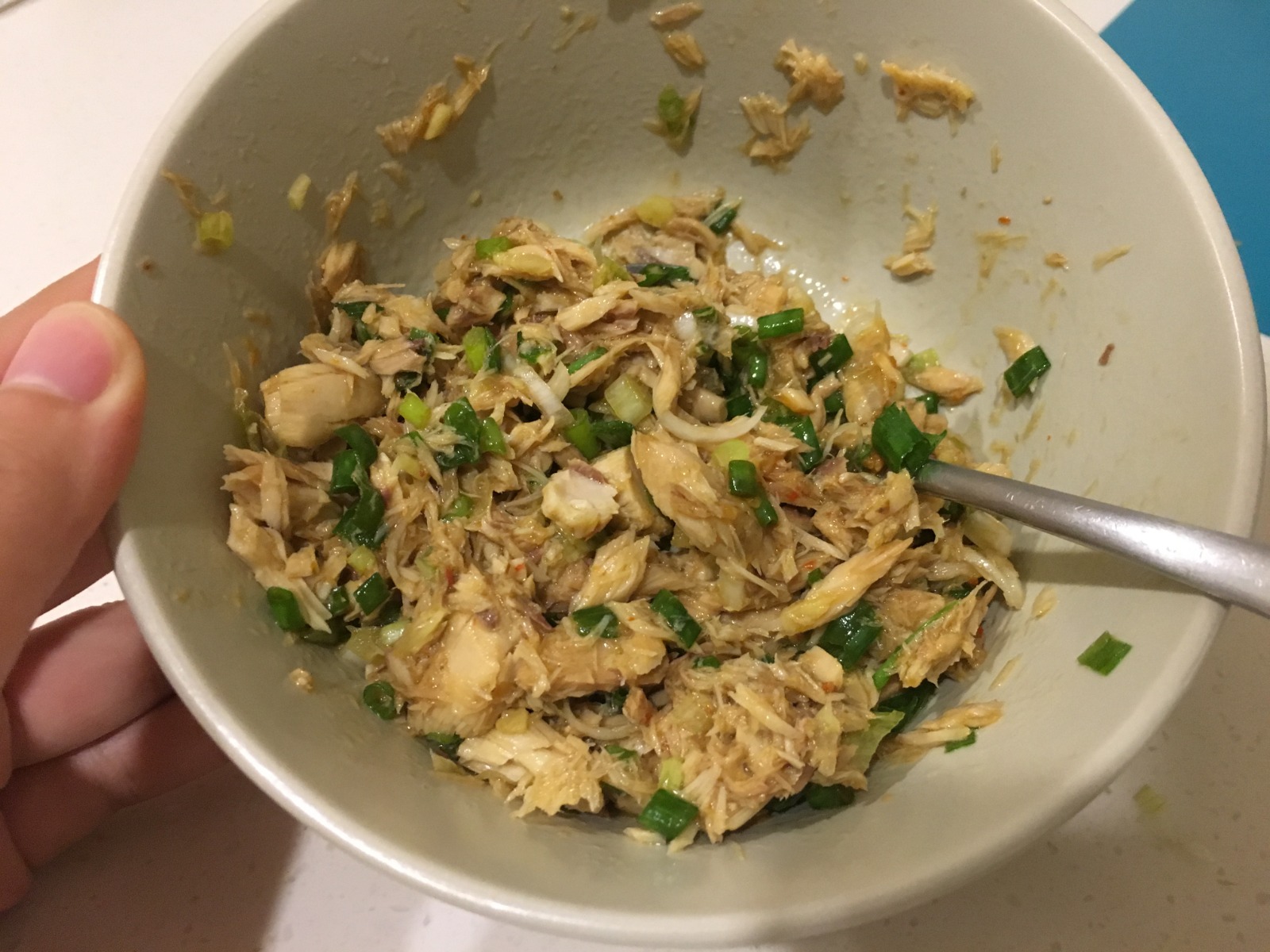 Photo by Jane Zhang.
Photo by Jane Zhang.
Then, all I had to do was place the saba mixture on top of the rice, and top with the toasted sesame seeds and dried seaweed pieces. (I also drizzled some sesame oil on top, because I’m obsessed with sesame oil.)
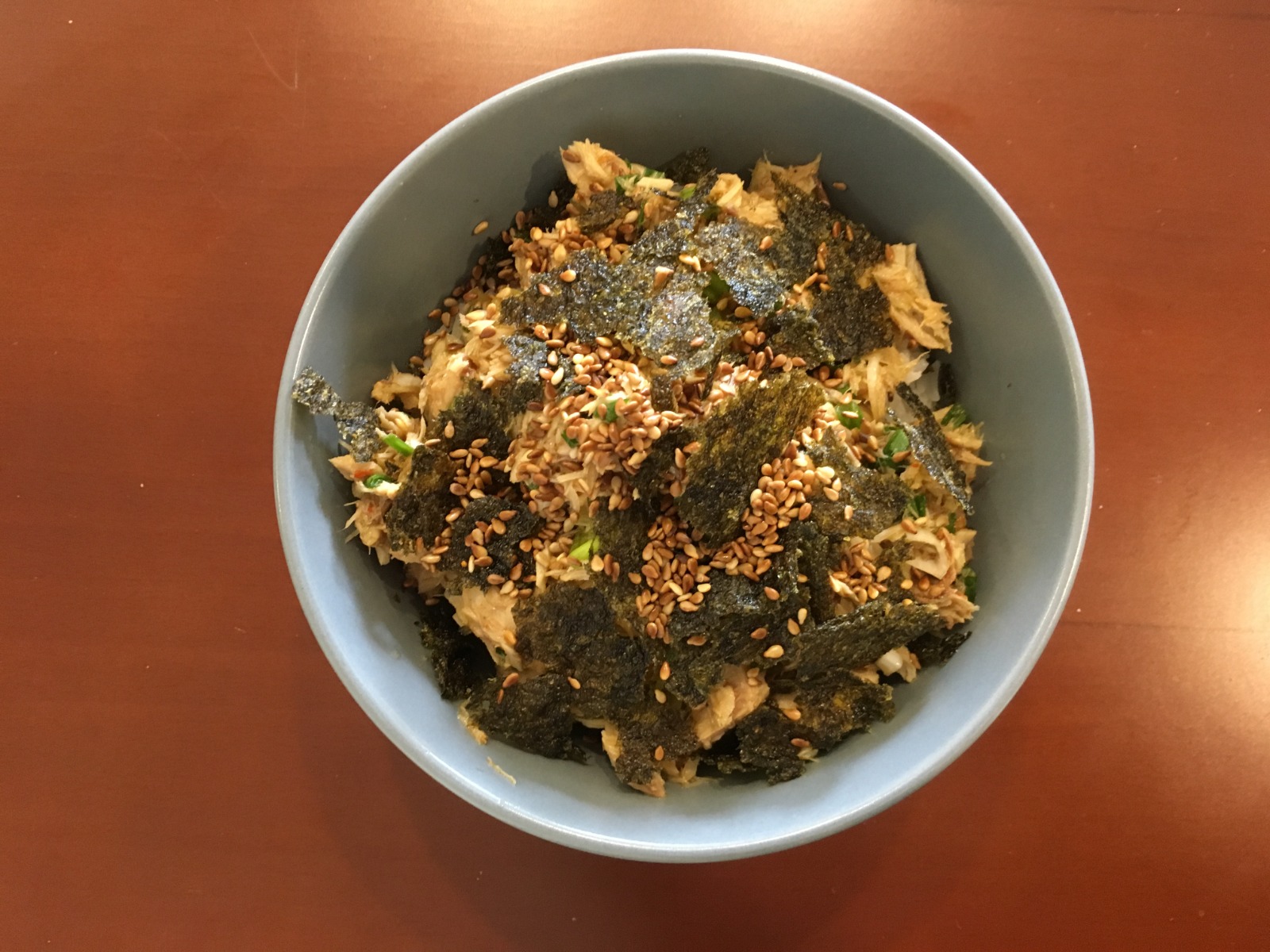 Photo by Jane Zhang.
Photo by Jane Zhang.
I didn’t have very high expectations for this dish, given how easy it was to prepare and the fact that I was basically eating the saba out of the can, but it tasted surprisingly fresh and super flavourful.
To be honest, before this meal, I was quite ignorant about the difference between tuna and saba. I didn’t think they’d taste that different, but I found that saba has slightly more of a bite to it, compared to tuna.
I was also pleased to find out that the saba flakes have 50% more Omega-3 than tuna, which means that not only was the dish delicious, it was also nutritious.
So in the future, I’ll probably interchange between adding tuna and saba to my recipes, in order to have more variety of nutrients.
You can check out the recipe yourself here.
Sardine fried rice
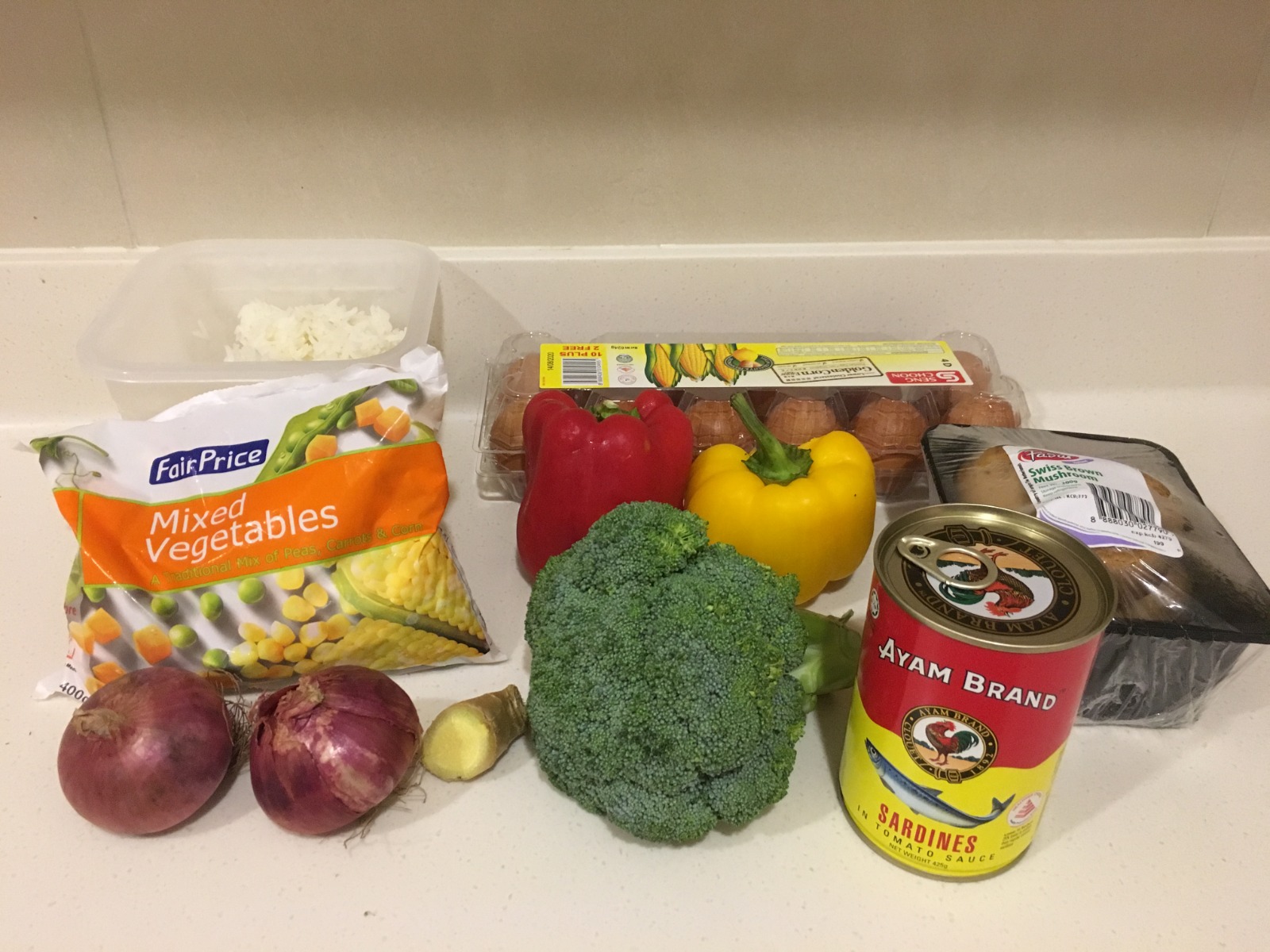 Photo by Jane Zhang.
Photo by Jane Zhang.
I decided to put my leftover rice from the previous recipe to good use by making it into a fried rice dish full of vegetables.
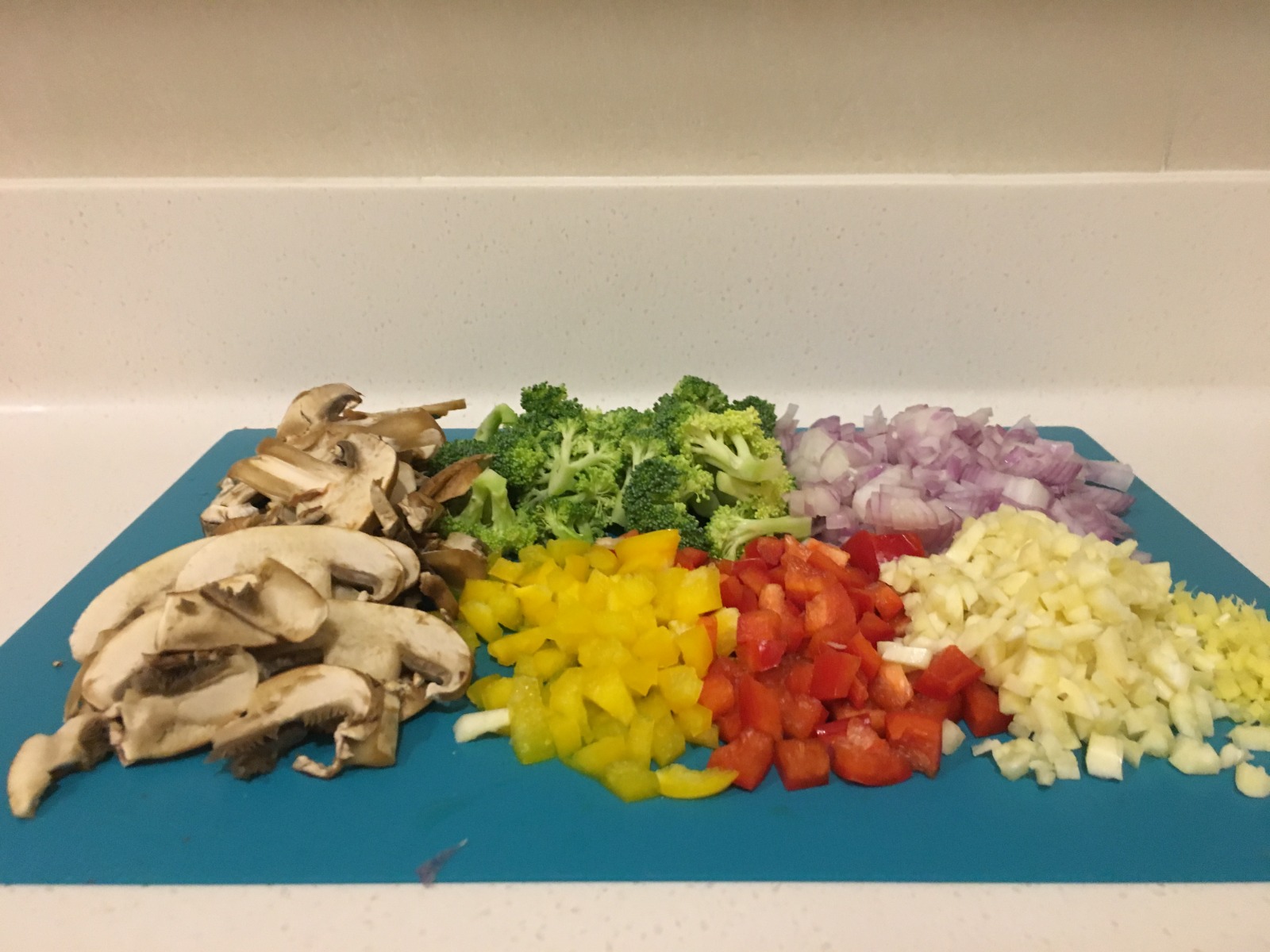 Mmm look at those colours! Photo by Jane Zhang.
Mmm look at those colours! Photo by Jane Zhang.
Okay, but I have a slight confession to make — I may or may not have briefly confused sardines and anchovies in my head, so I mistakenly thought I was going to be making ikan bilis fried rice until I opened the can and saw that sardines are much larger than anchovies.
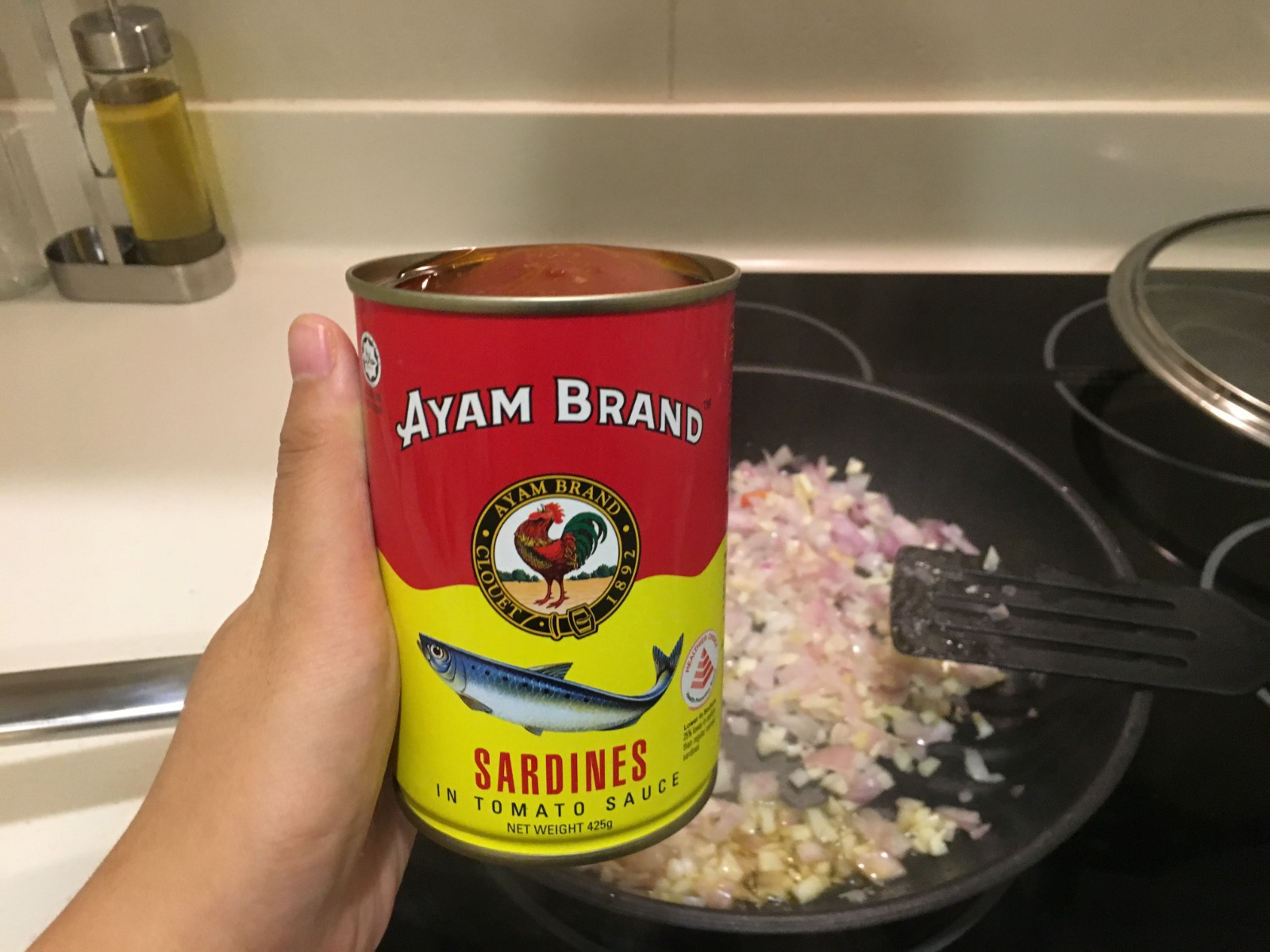 Moments before I realised my mistake. Photo by Jane Zhang.
Moments before I realised my mistake. Photo by Jane Zhang.
Still, the sardines worked really well for the fried rice. I broke them up into smaller pieces, as the sardines come in large pieces, and used some of the tomato sauce to flavour the fried rice as well.
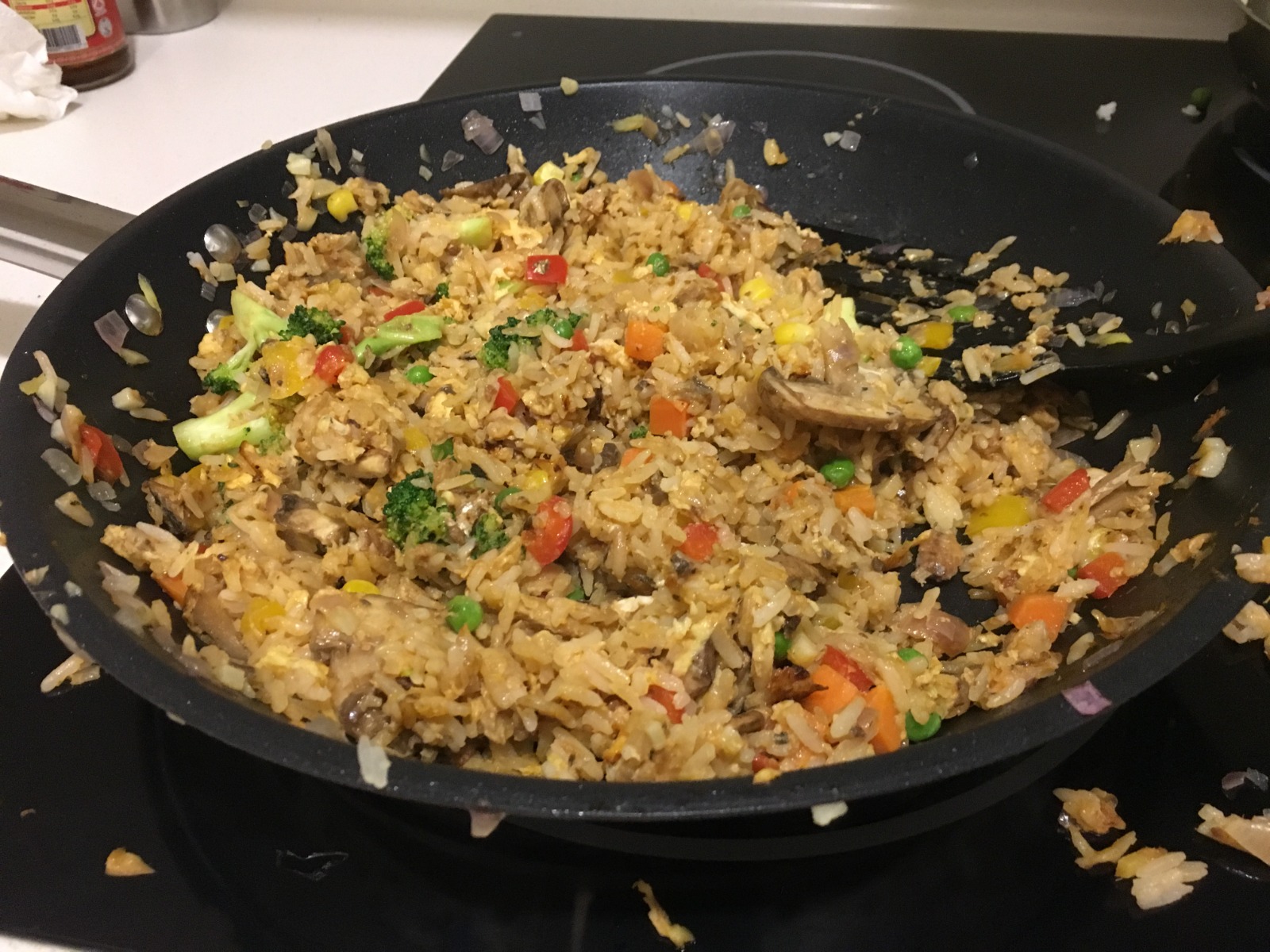 Yes, I am a very messy cook. Photo by Jane Zhang.
Yes, I am a very messy cook. Photo by Jane Zhang.
Overall, I was pretty happy with how it turned out, as the tomato sauce added a nice tang to the rice, while the fish was tasty and not too salty.
I didn’t remove the sardine bones, as they are a good source of calcium. They are so soft that I didn’t even notice them while eating.
I was surprised to find out how healthy sardines actually are; in fact, one small can of sardines (155g) is the same as 10 fish oil supplement capsules.
The portion was also quite large, so it lasted quite a number of meals.
I’ll probably try to make this meal a staple for me since it’s so easy to throw together, using whatever vegetables I have in my fridge.
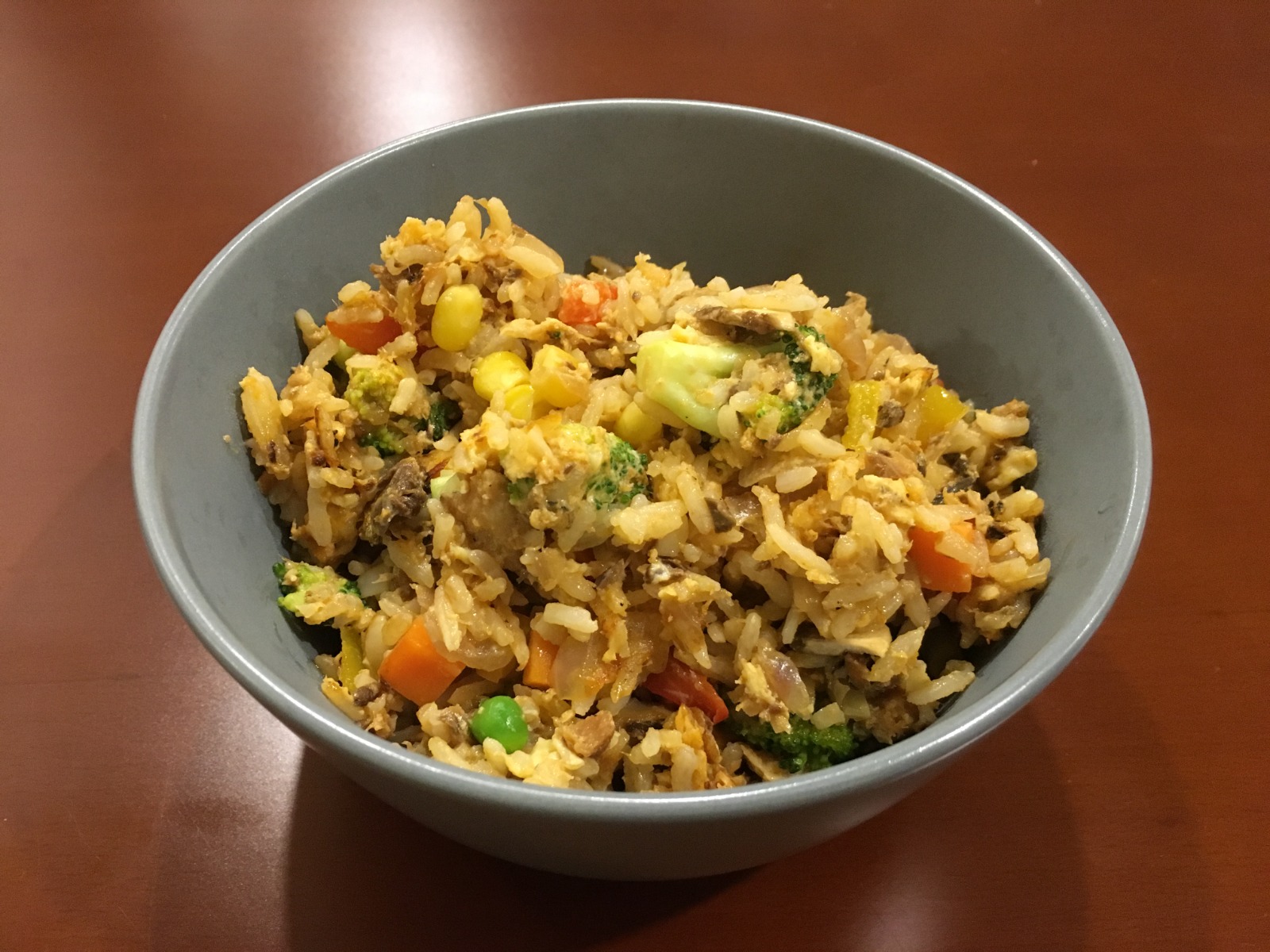 Photo by Jane Zhang.
Photo by Jane Zhang.
I adapted the recipe for vegetable fried rice here.
Tuna quesadilla
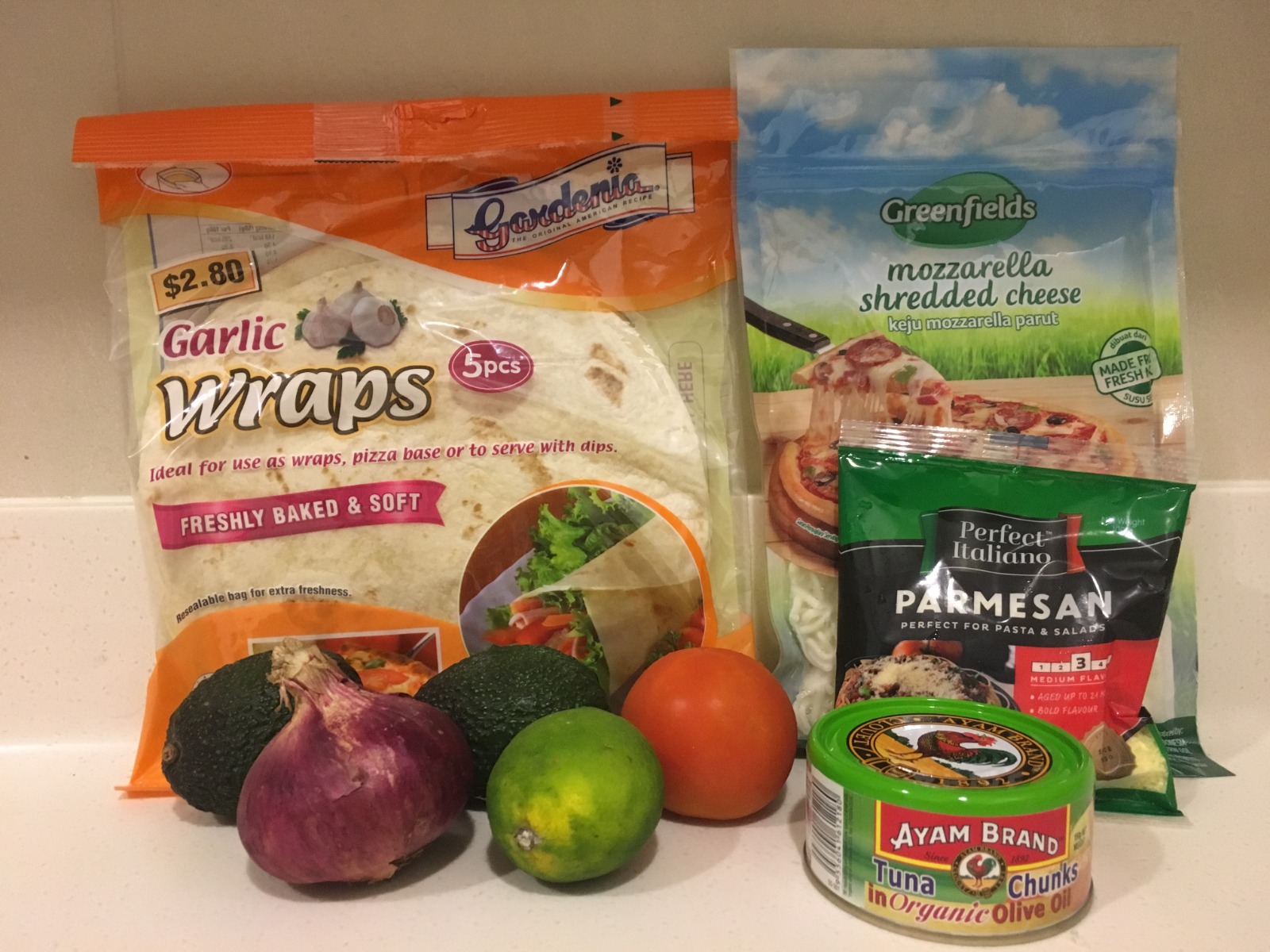 Photo by Jane Zhang.
Photo by Jane Zhang.
The last recipe was the one I was most excited about, because I am a huge fan of quesadillas.
Other than saving the best for last, I decided to make this dish last because I had to wait for my avocados to ripen so that I could either add them into the quesadilla or make a guacamole (I hadn’t decided yet).
Unfortunately for me, the avocados… did not go according to plan.
[caption id="" align="alignnone" width="1600"]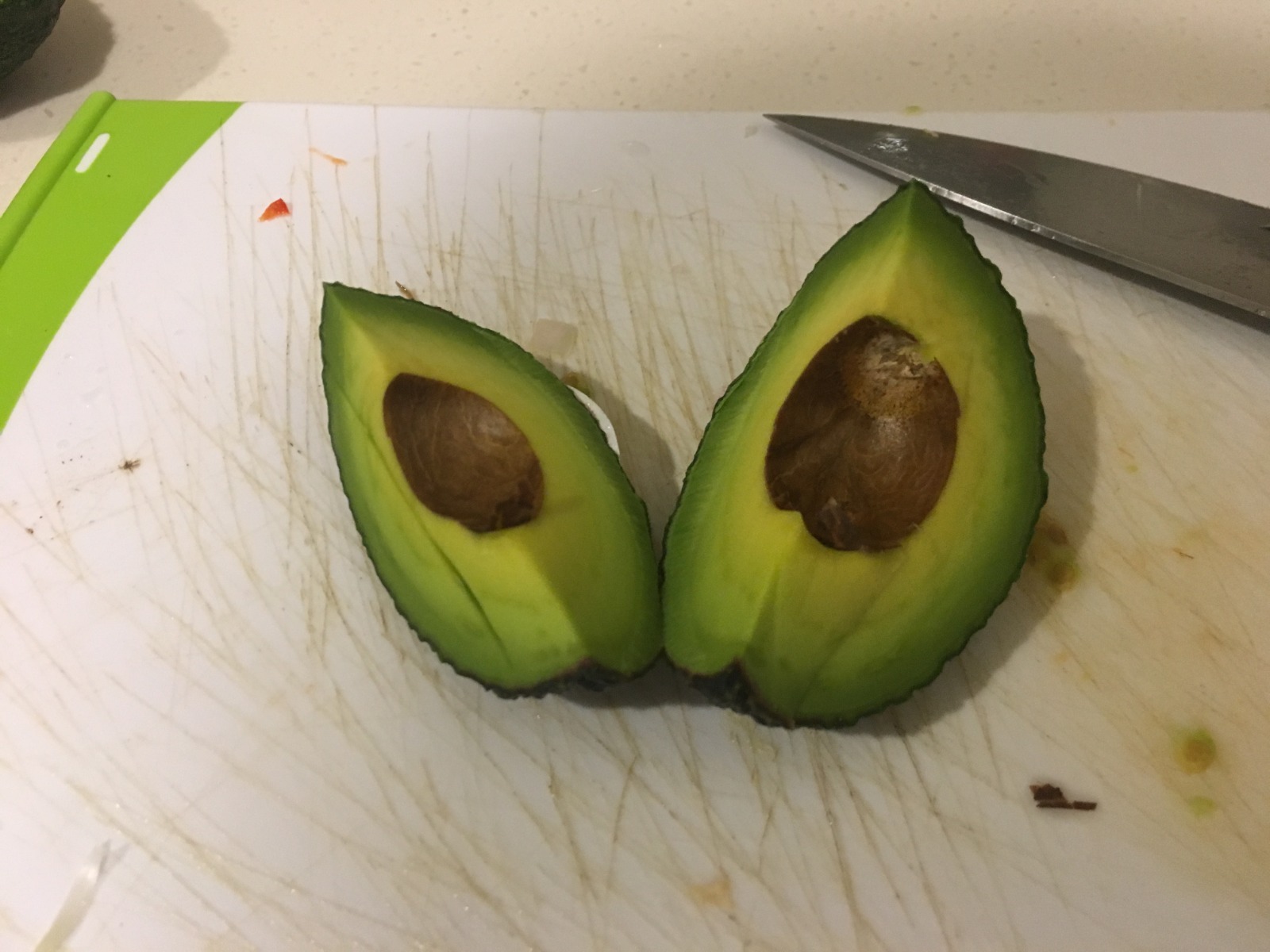 The avocados ripened strangely and were extremely rubbery :( Photo by Jane Zhang.[/caption]
The avocados ripened strangely and were extremely rubbery :( Photo by Jane Zhang.[/caption]
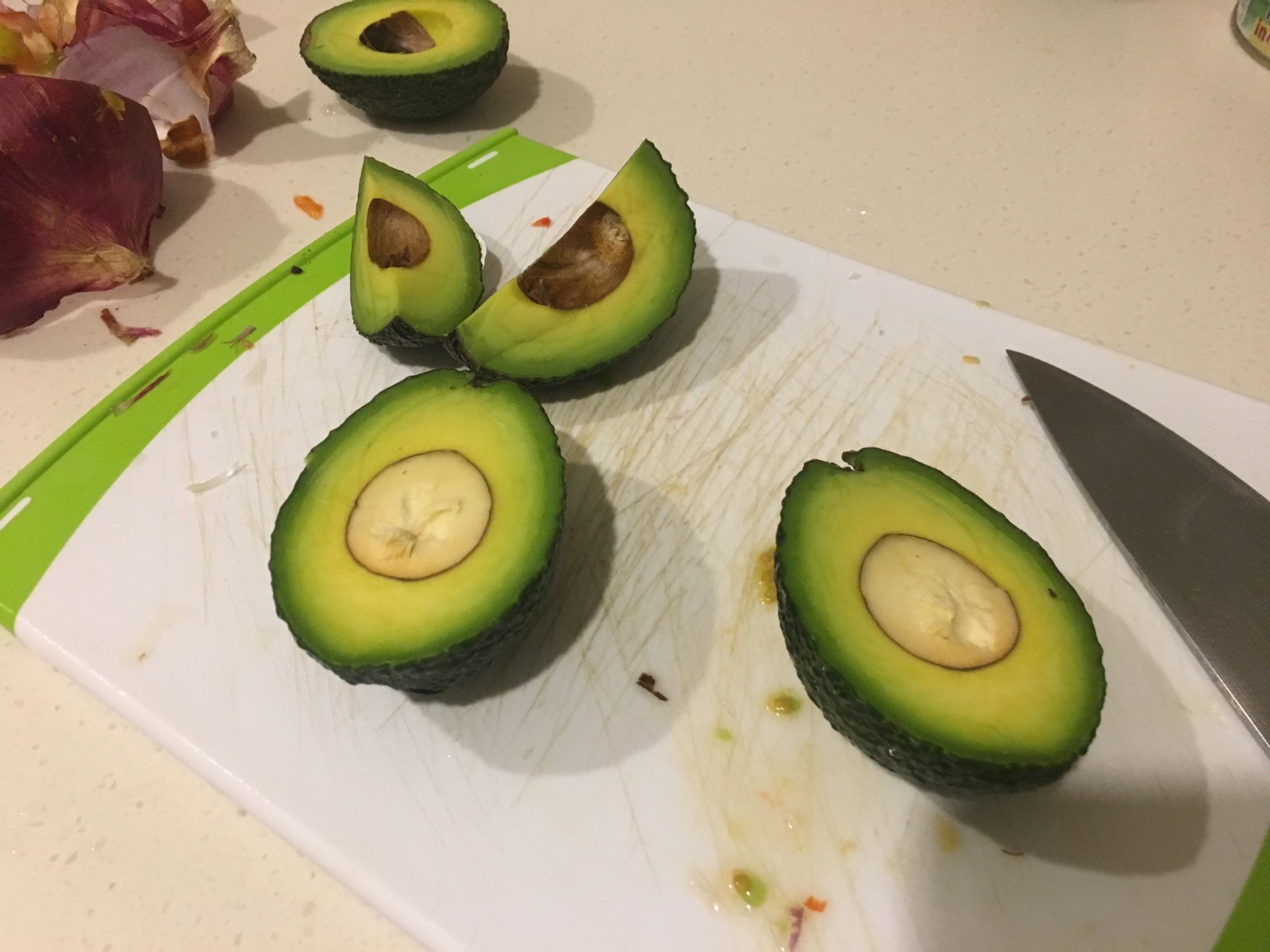 More avocado sadness. Photo by Jane Zhang.
More avocado sadness. Photo by Jane Zhang.
For the record, no, I did not cut the avocado seed in half; it broke when I tried to twist the avocado open. Needless to say, I sadly had to toss the avocados, as they were going to do nothing but detract from my quesadilla experience.
Thankfully, the rest of the cooking process went far more smoothly than the avocados. For the quesadilla filling, I combined some tuna chunks with chopped tomato and onion, and, of course, lots and lots of cheese (both mozzarella and parmesan).
I was very surprised (and pleased) to see that the ingredient list for the tuna was so short, and contained all things that I could actually read and understand: wild caught tuna, organic certified extra virgin olive oil, and salt.
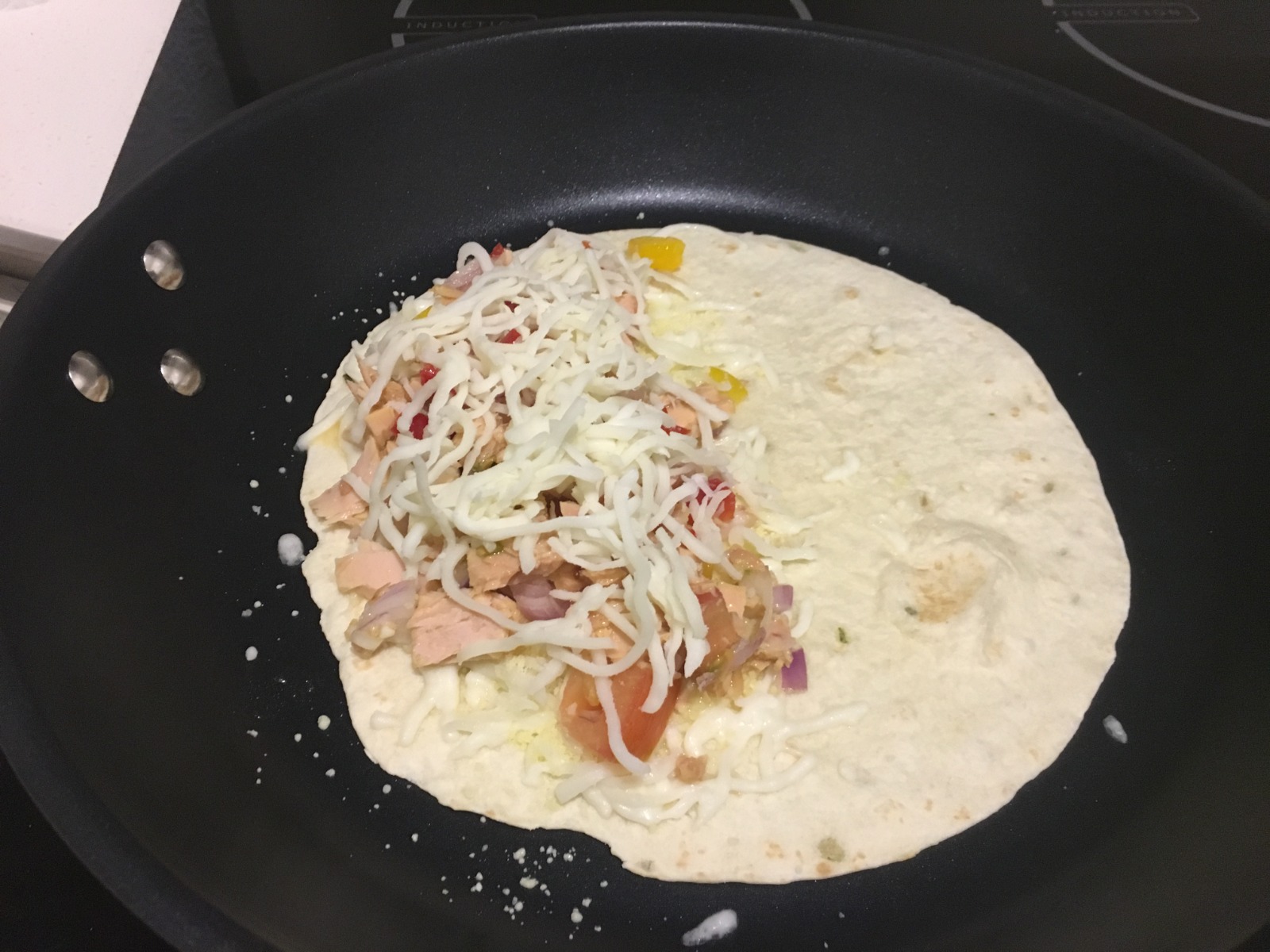 Mmm, look at that cheese. Photo by Jane Zhang.
Mmm, look at that cheese. Photo by Jane Zhang.
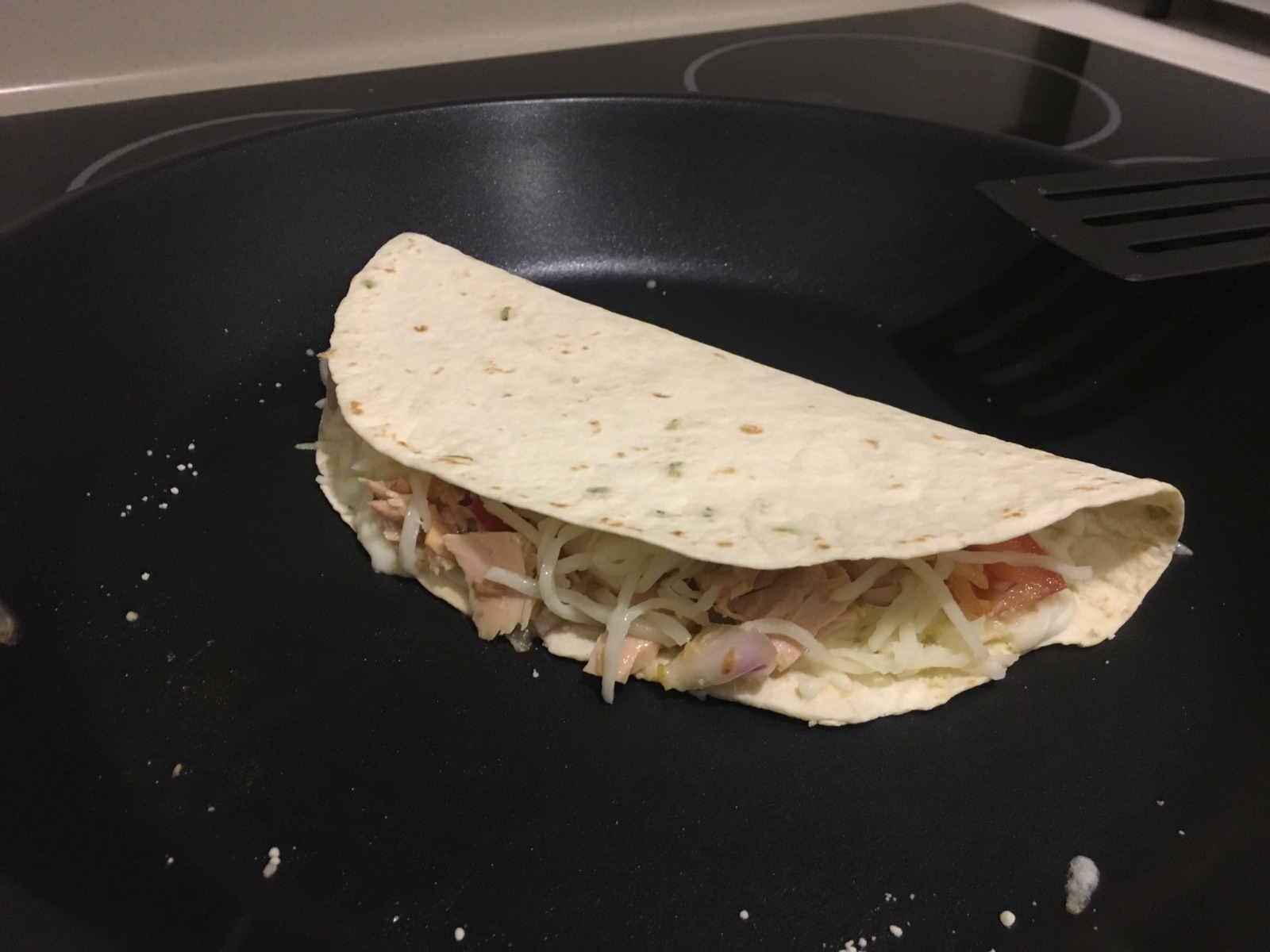 Photo by Jane Zhang.
Photo by Jane Zhang.
While waiting for the quesadillas to cook, I got a little snacky, so I pulled out a can of salmon spread that had caught my eye at the supermarket. I mixed it in with a bit of the chopped up tomato and onion, and ate it with some crackers.
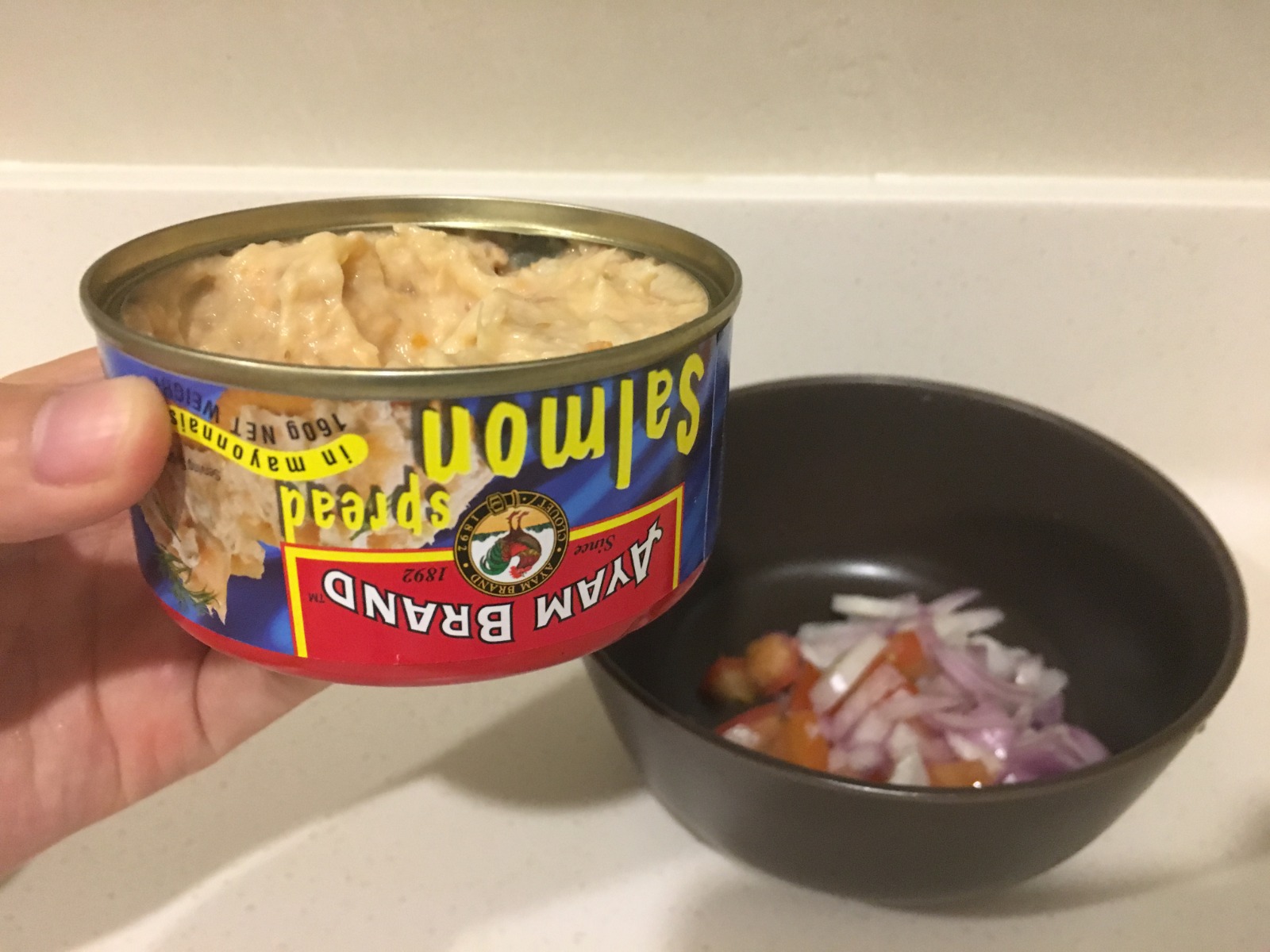 Photo by Jane Zhang.
Photo by Jane Zhang.
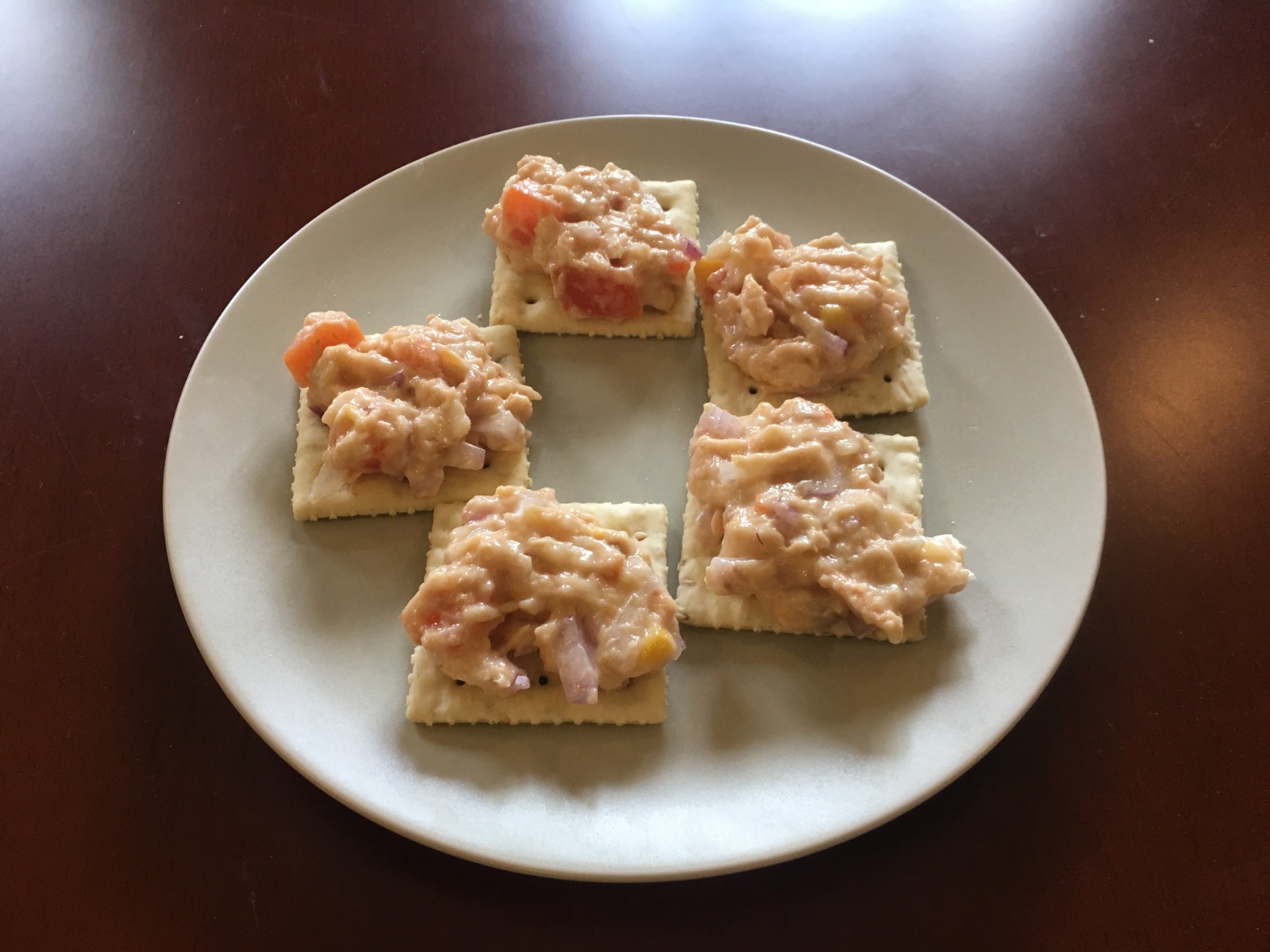 Photo by Jane Zhang.
Photo by Jane Zhang.
Soon, the quesadillas were done cooking, and I served them with a side of sour cream mixed with tomato, onion, and lime juice.
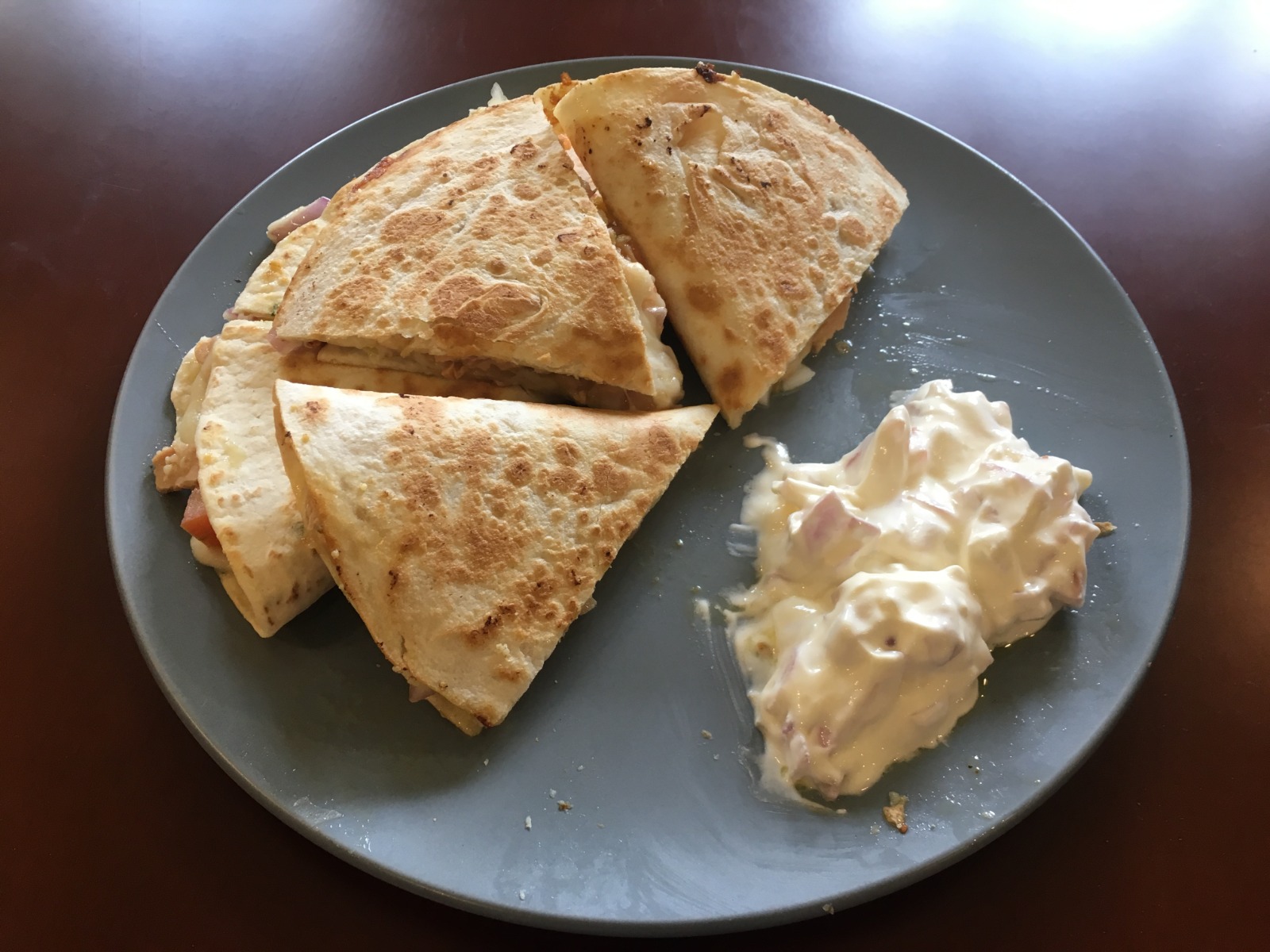 Photo by Jane Zhang.
Photo by Jane Zhang.
Not to toot my own horn, but this meal was soooooo good. I have to admit that perhaps I went a bit too hard on the cheese, so it was a pretty heavy meal, but the tuna was nice and light, and the sour cream went so well with the quesadilla.
For this dish, I combined this recipe and this recipe together.
Reflections on a week of eating canned food
When I came into this week, I was dreading the thought of having to eat so much canned food, because I thought it would make my meals taste less fresh, and it would be unhealthy for me.
However, after making and eating these five meals (plus a snack), I realised that my preconceived notions about canned food were completely wrong.
In fact, far from tasting less fresh or being unhealthy, I found that my meals tasted great, were filling and nutritious, and were easy to make because everything was ready to use, right out of the can!
As I was preparing my meals, I was very surprised and impressed to see that many of Ayam Brand’s products are marked with the Healthier Choice logo. In addition, the short ingredient lists proved to me that they don’t use preservatives, and have no need for them due to their canning process.
And an extra plus — buying the canned foods was far more affordable than buying fresh fish. This is especially helpful, considering that more fatty fish like sardines, mackerel (saba), and tuna can be tough to find in wet markets.
Currently, Ayam Brand is offering Mothership readers the chance to redeem actual size cans of their new range of Saba flakes to sample for free. All you have to do is register here.
As for me, I’m looking forward to stocking up on some Ayam Brand canned foods and incorporating some of these recipes into my regular cooking schedule — especially the quesadillas.
This sponsored article brought to you by Ayam Brand helped the author up her cooking skills.
Top photos by Jane Zhang.
If you like what you read, follow us on Facebook, Instagram, Twitter and Telegram to get the latest updates.
